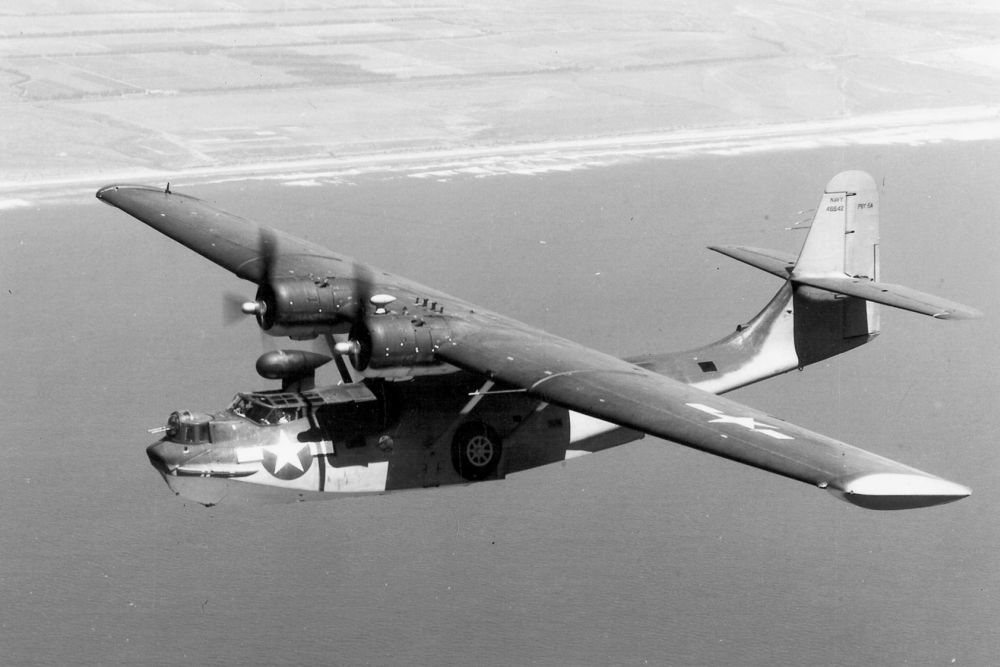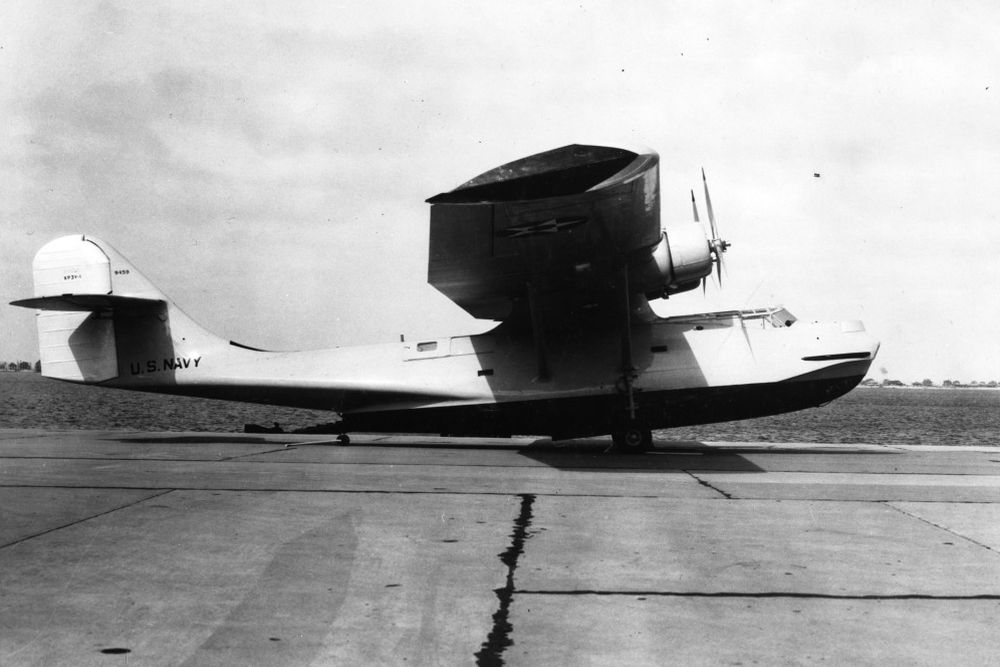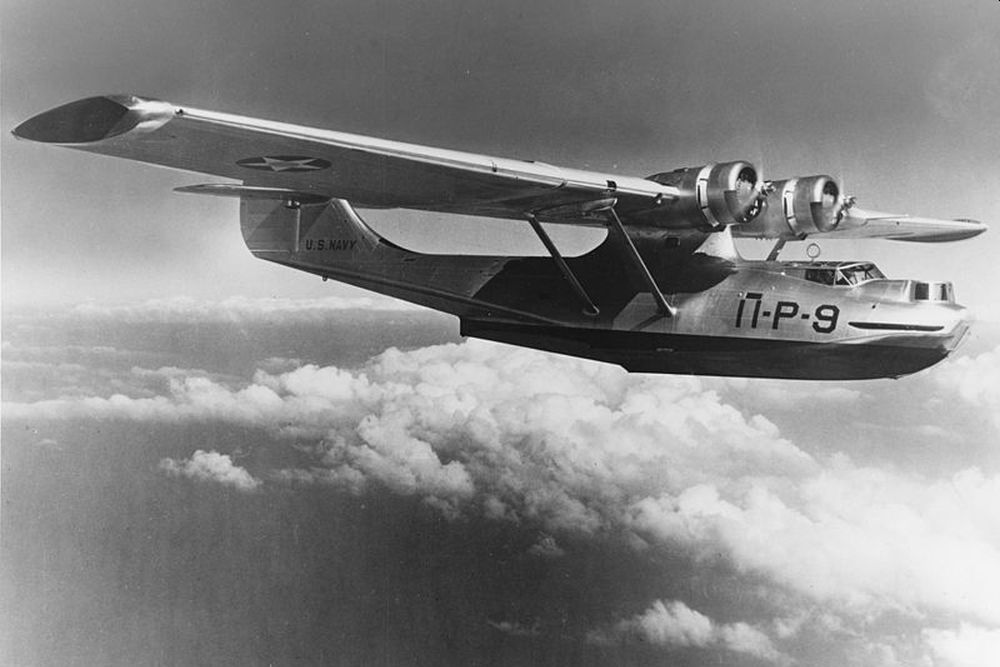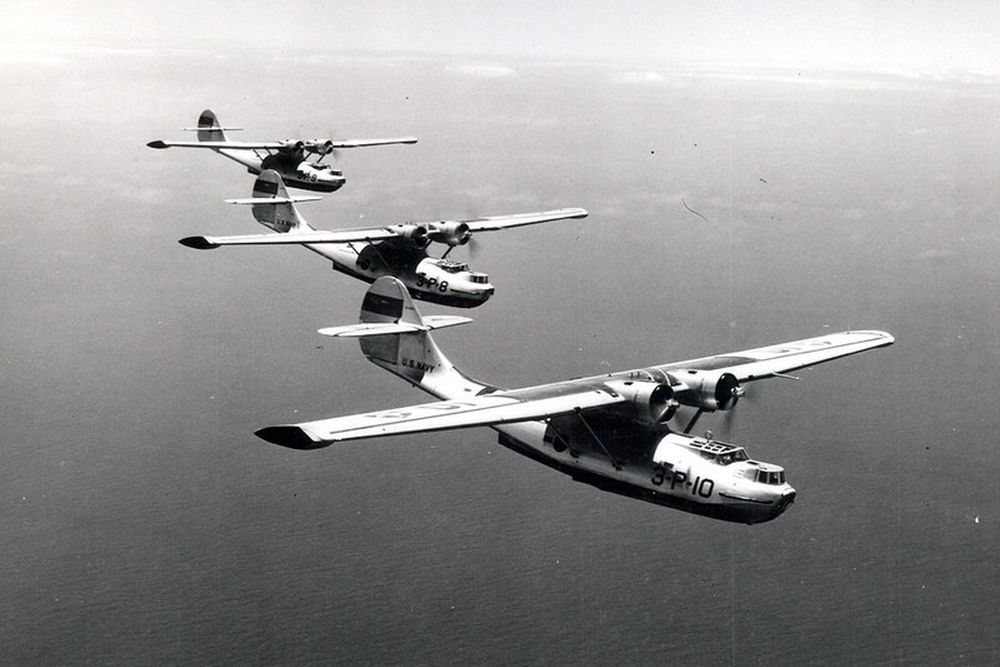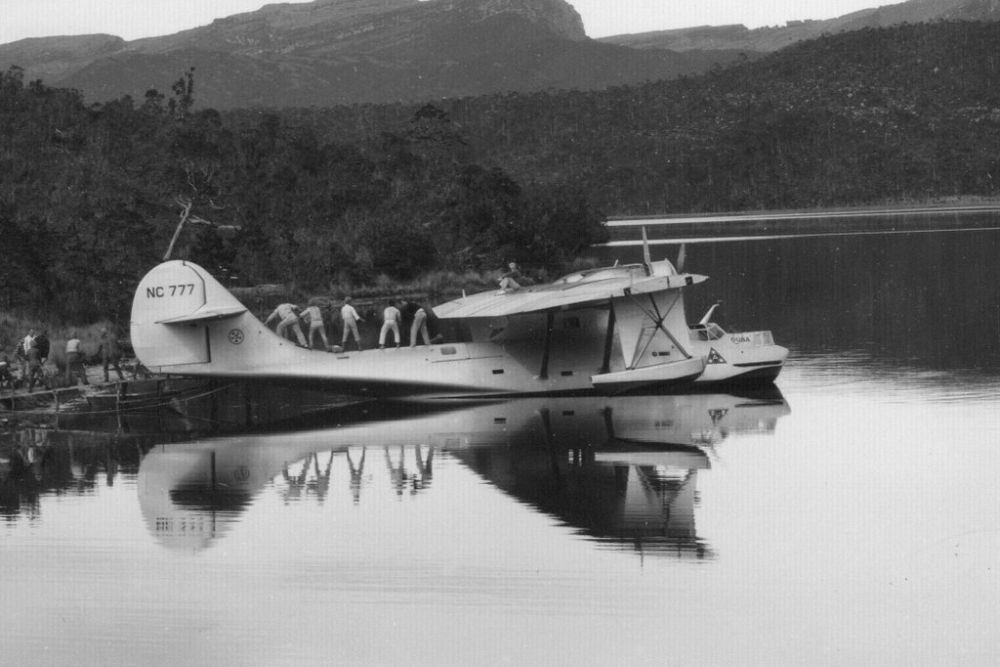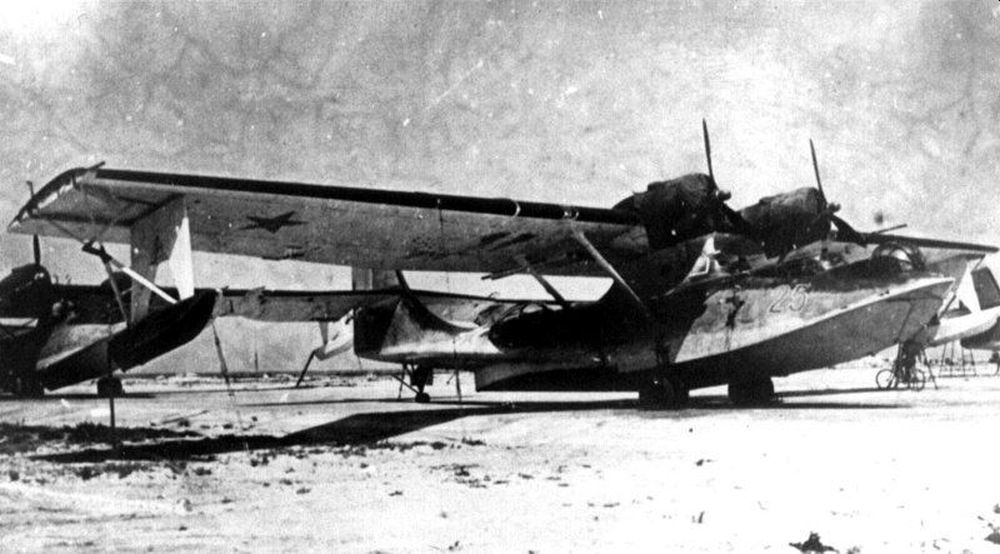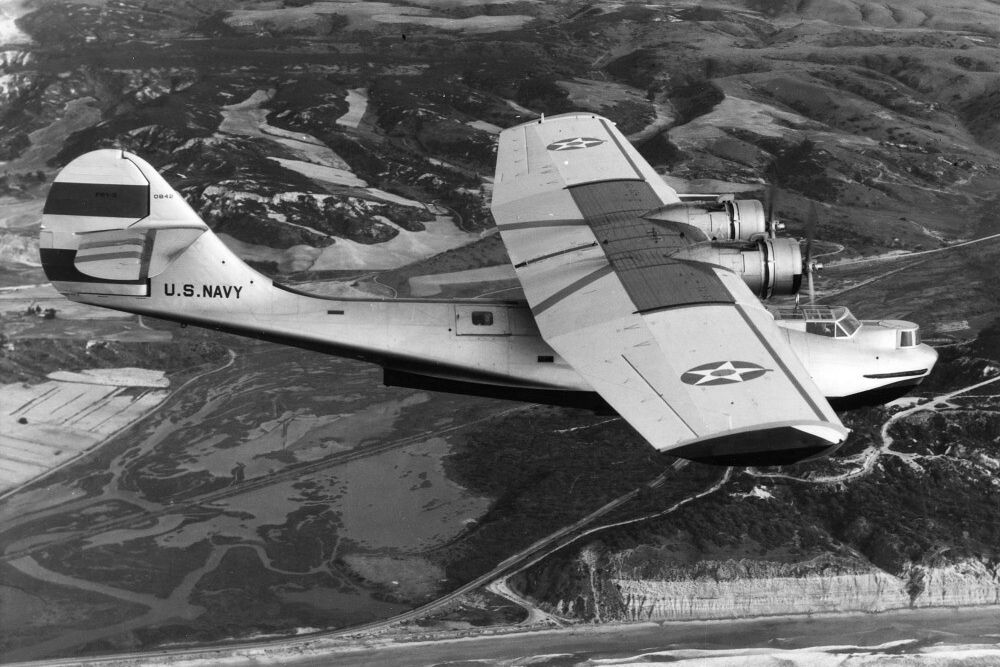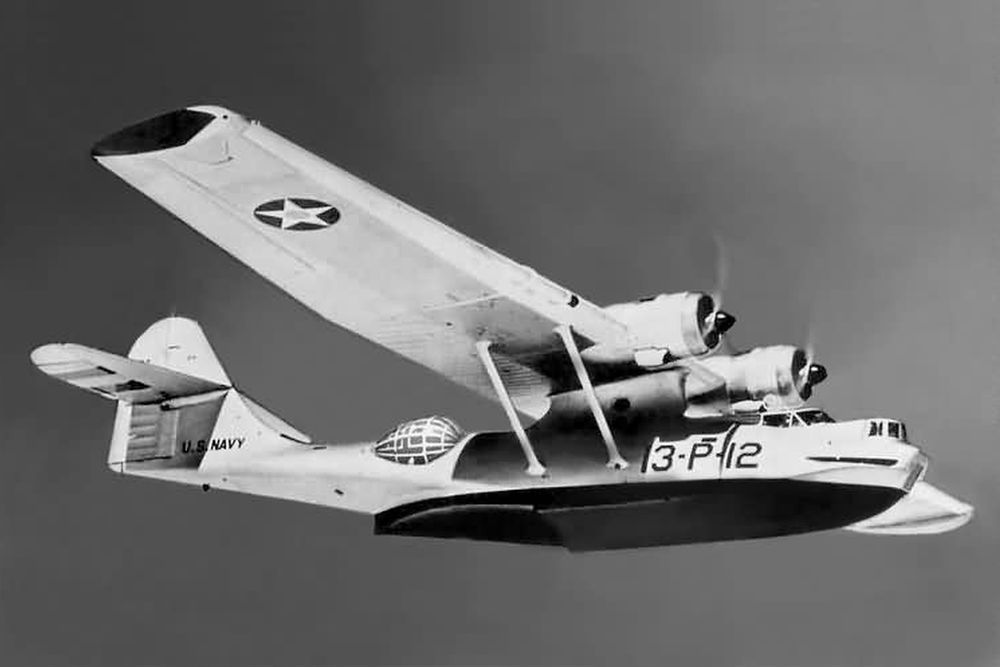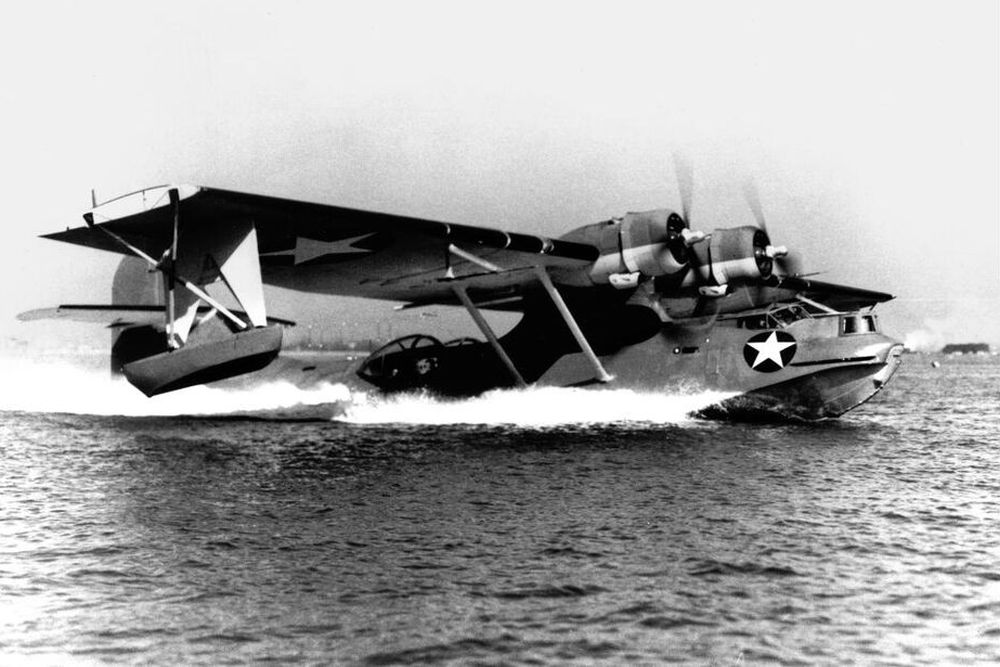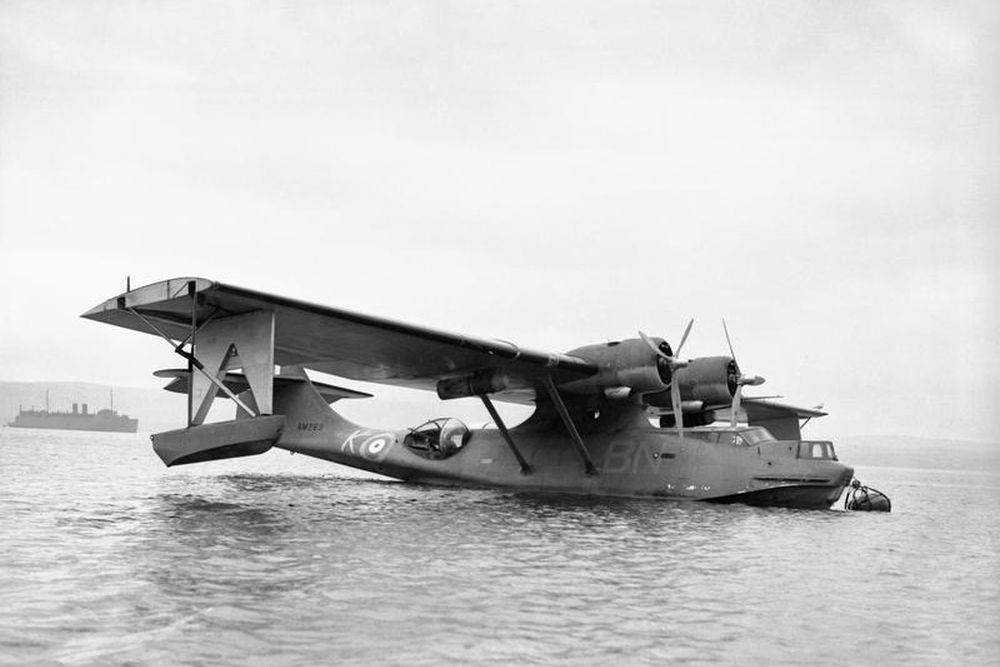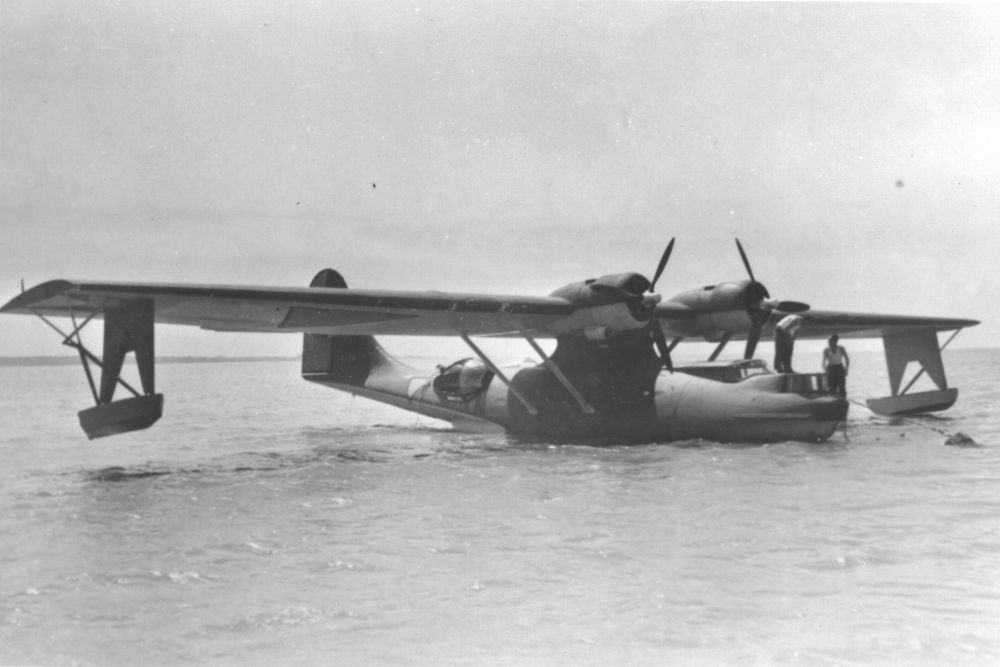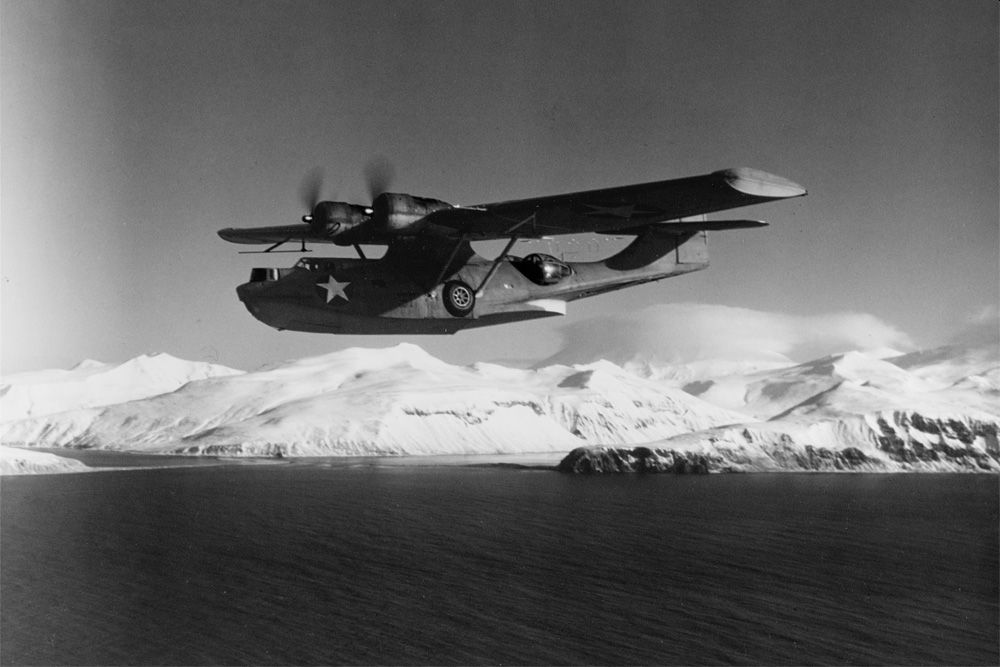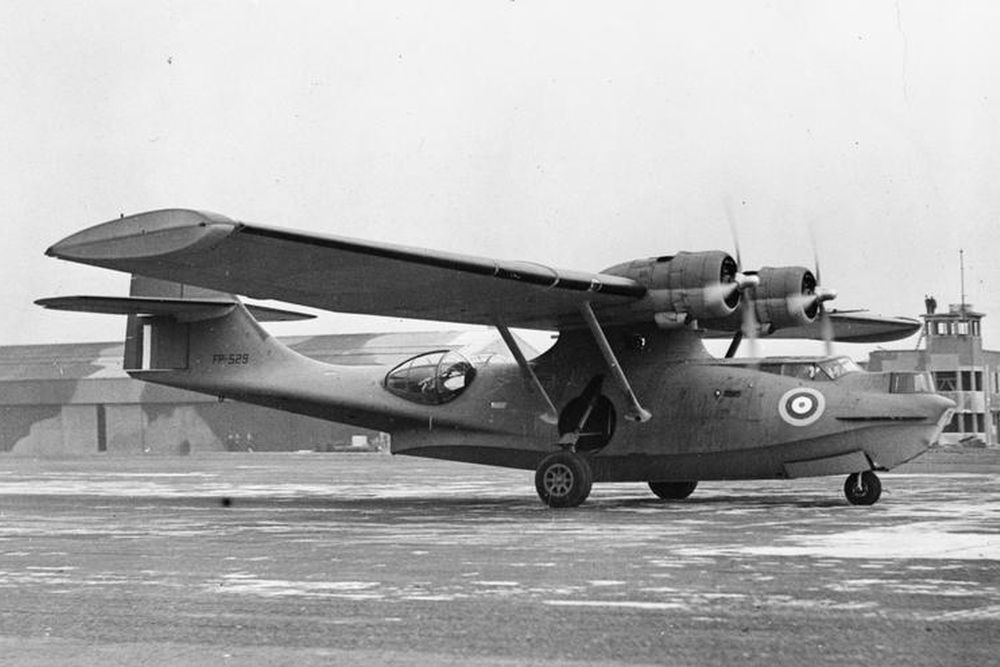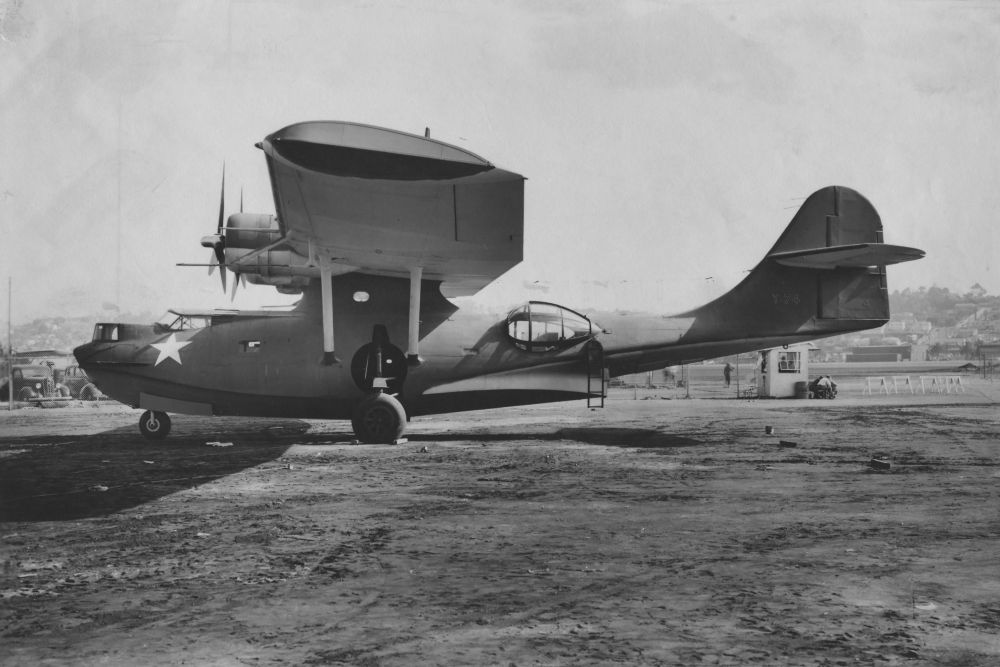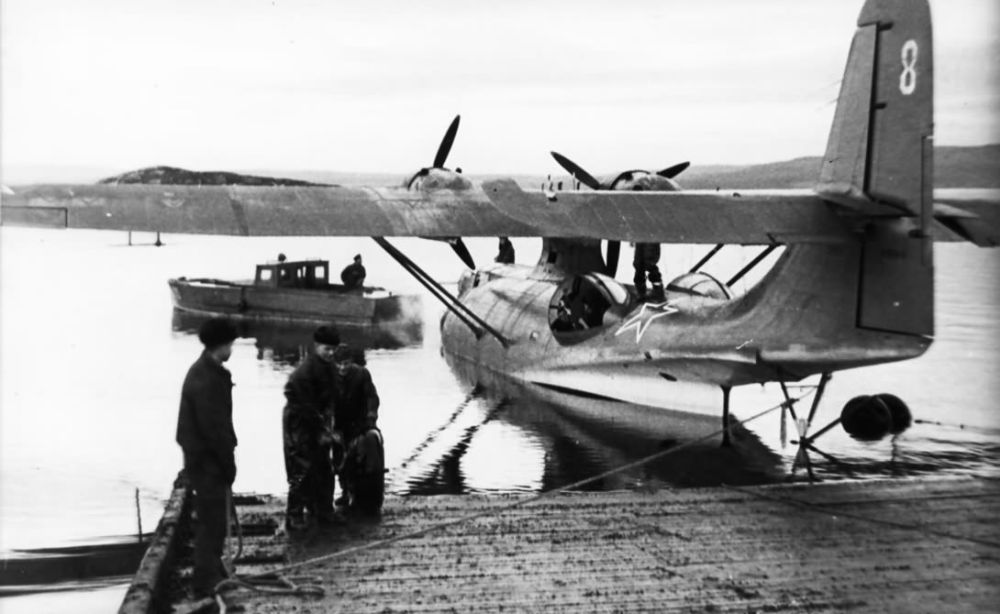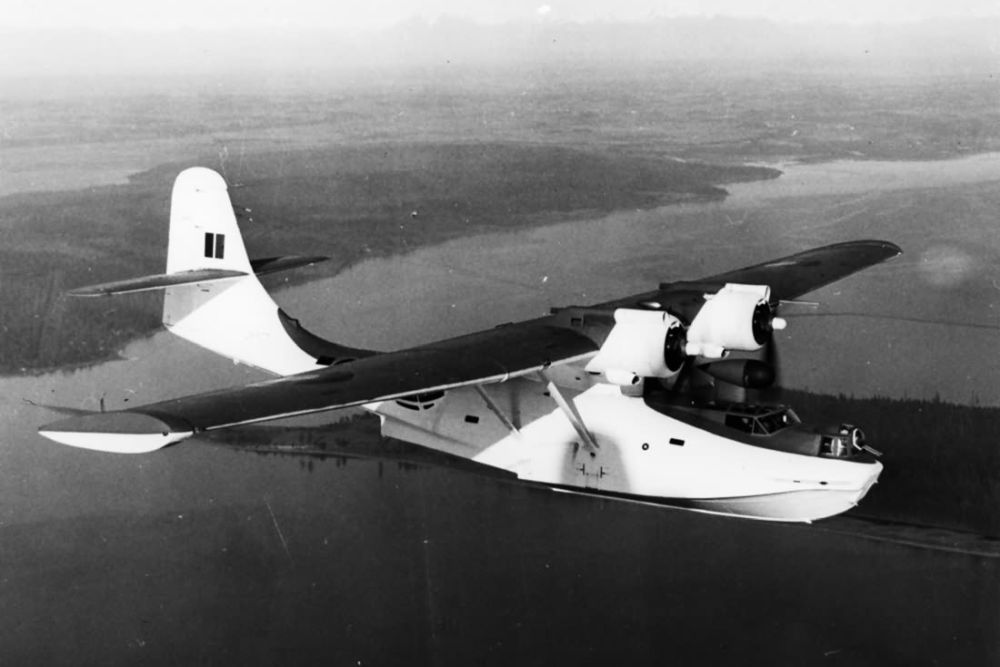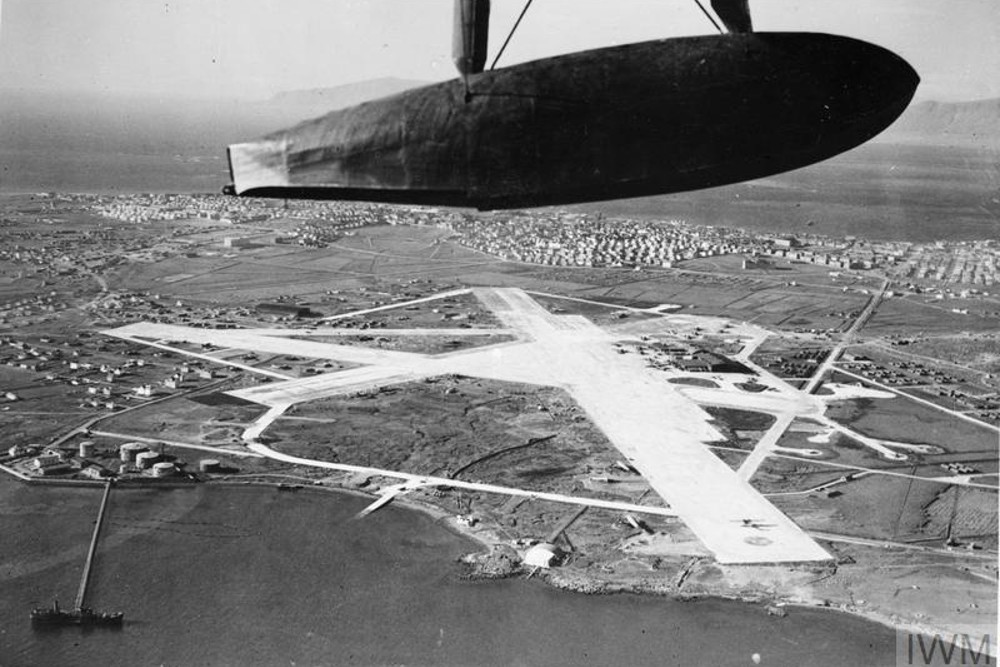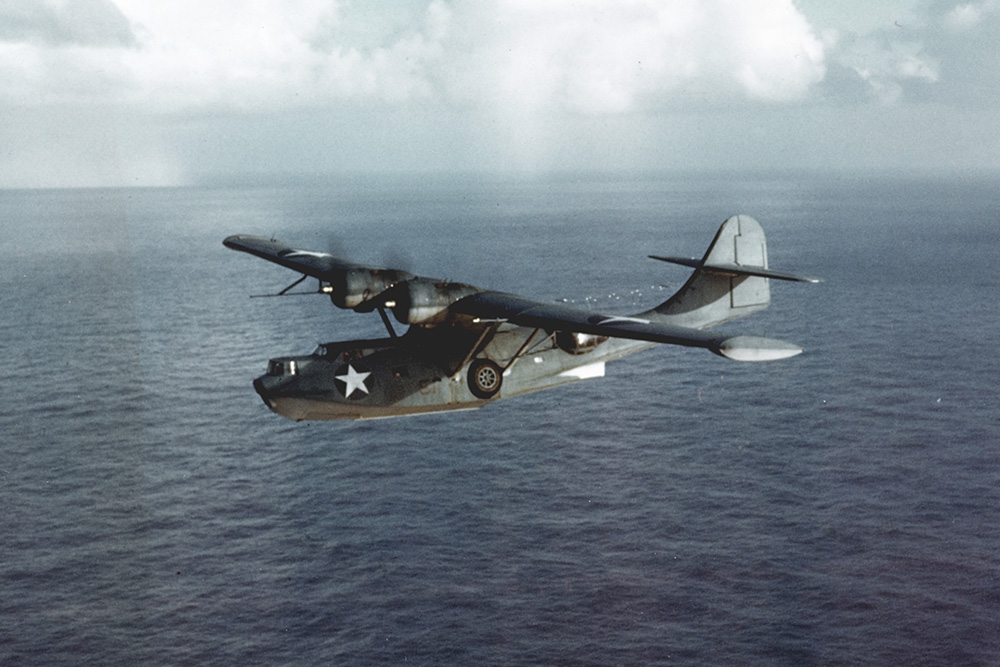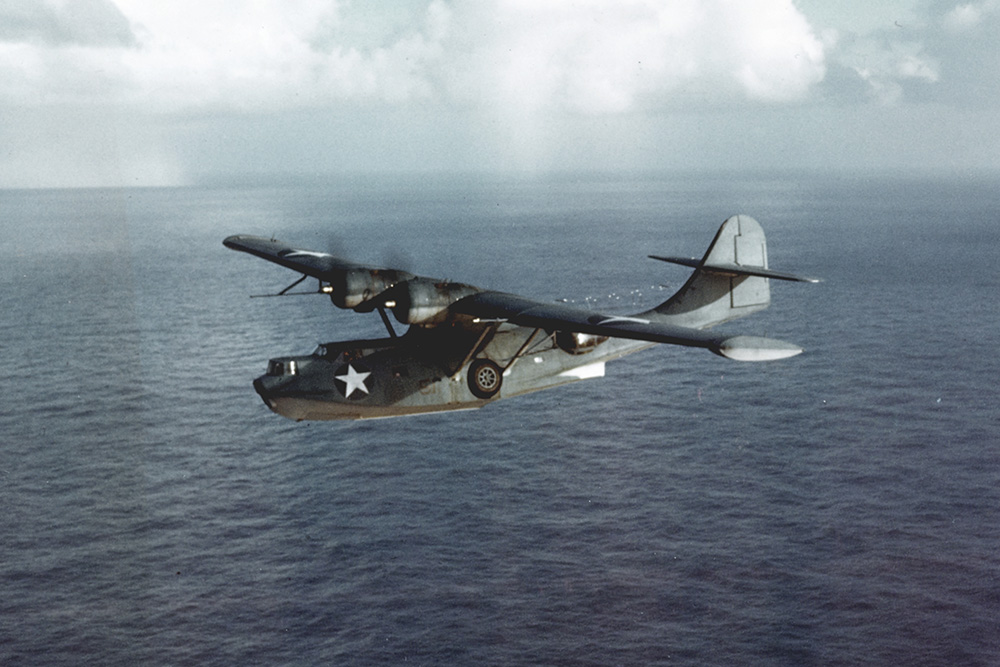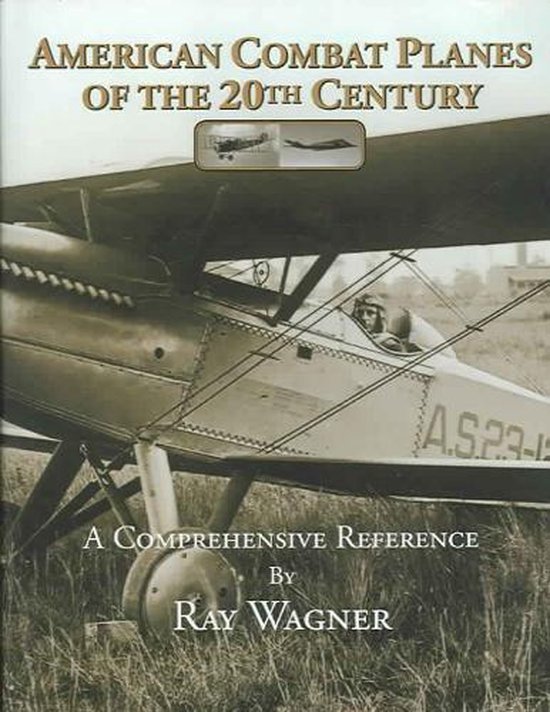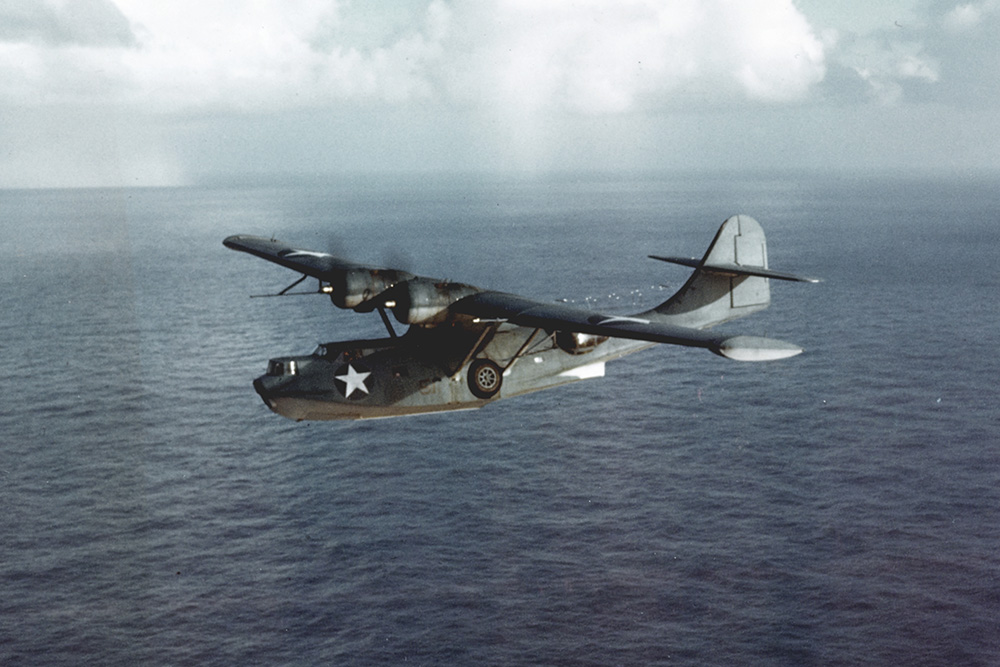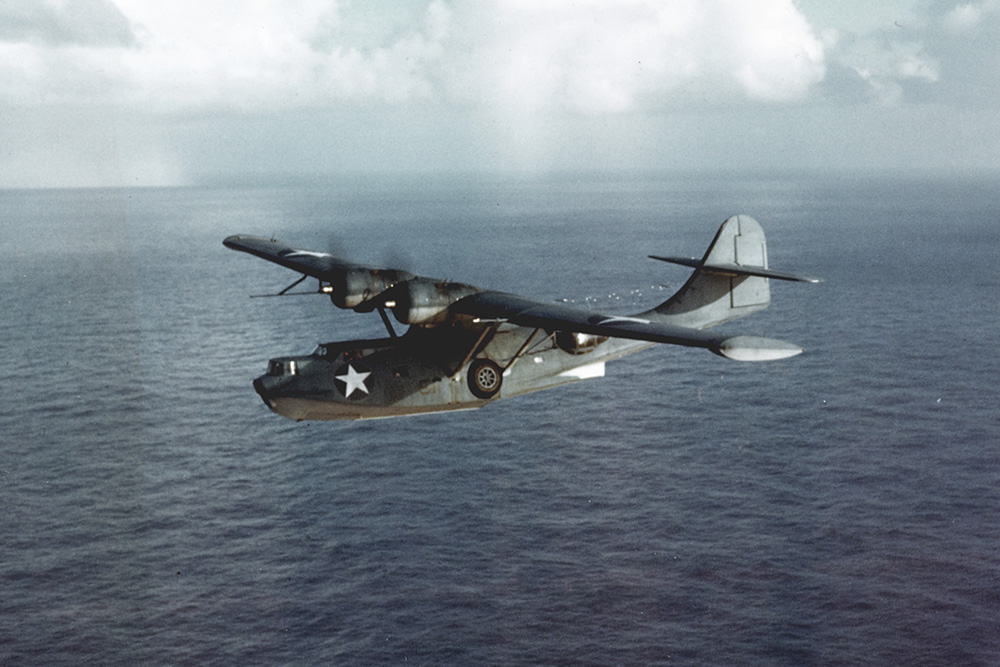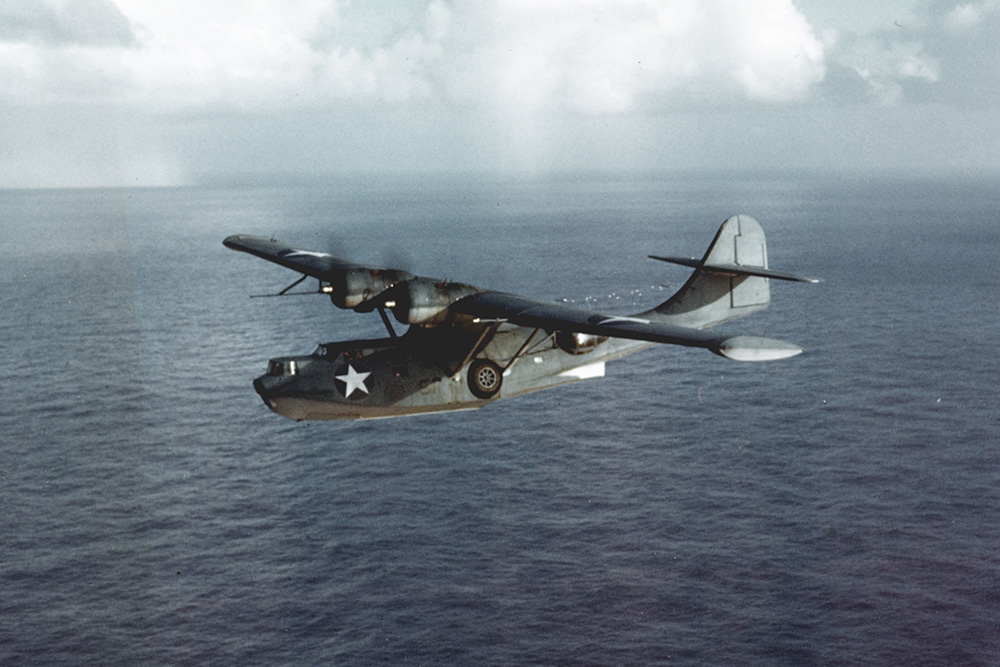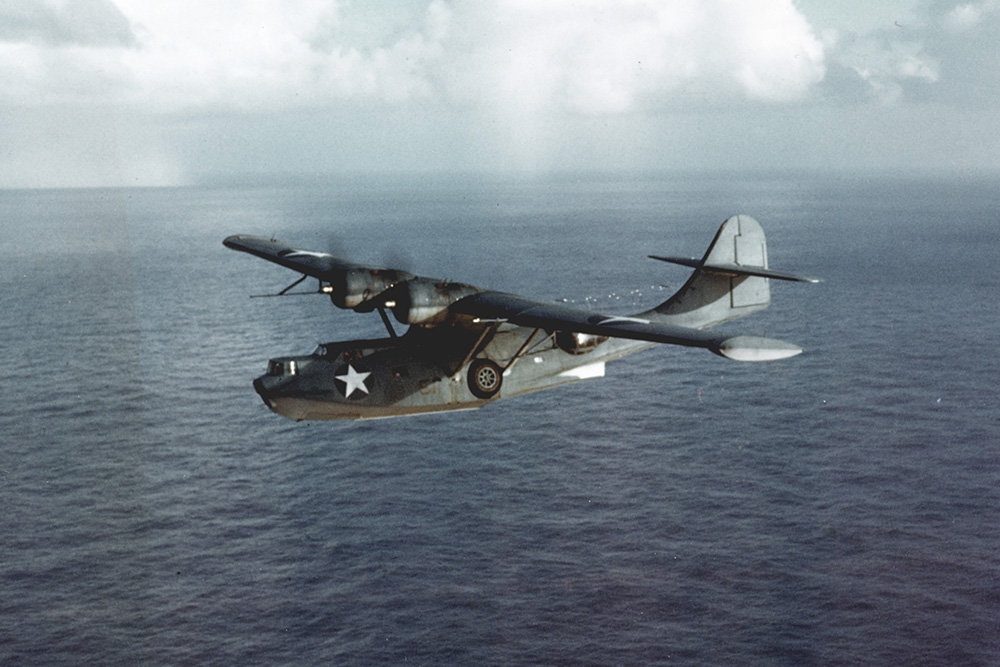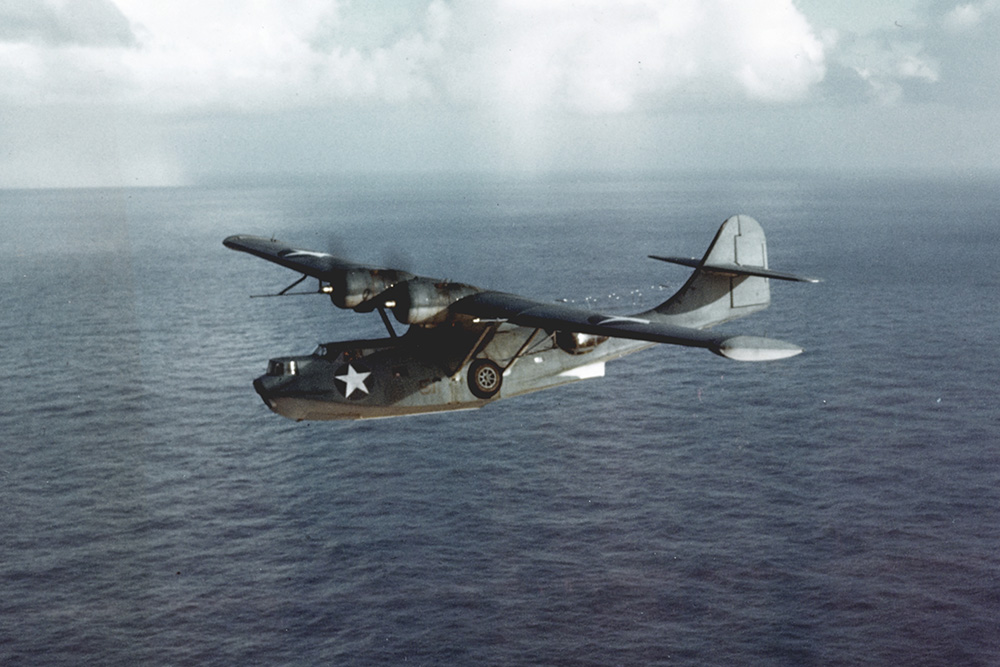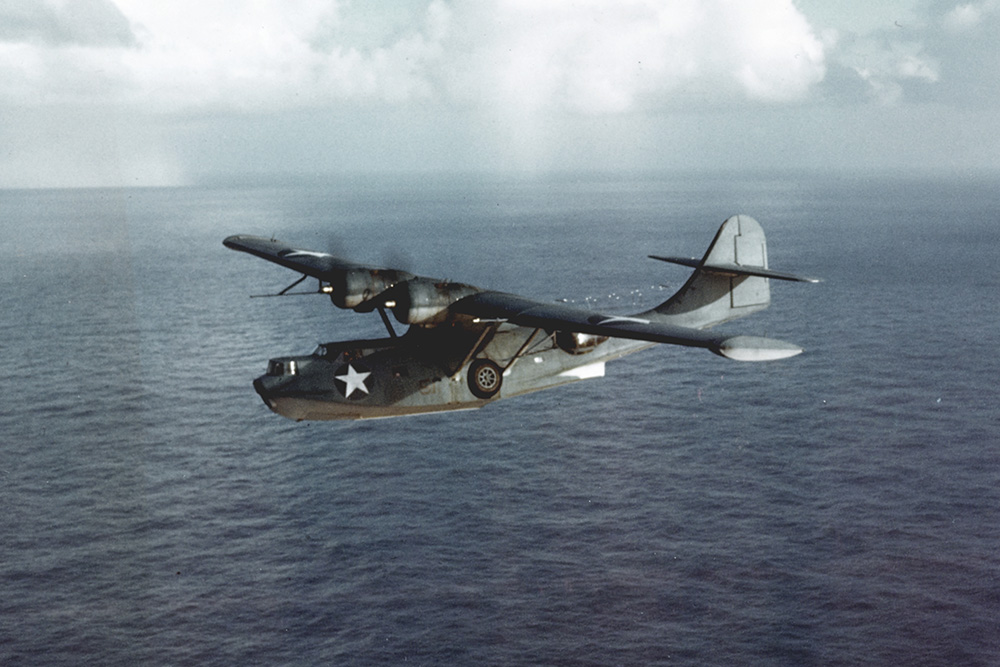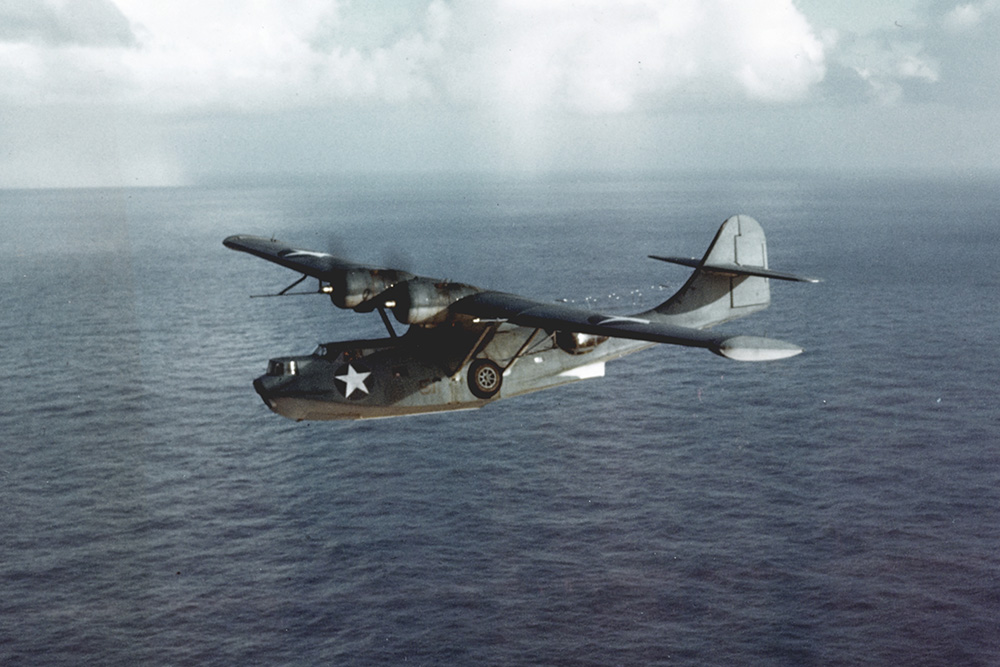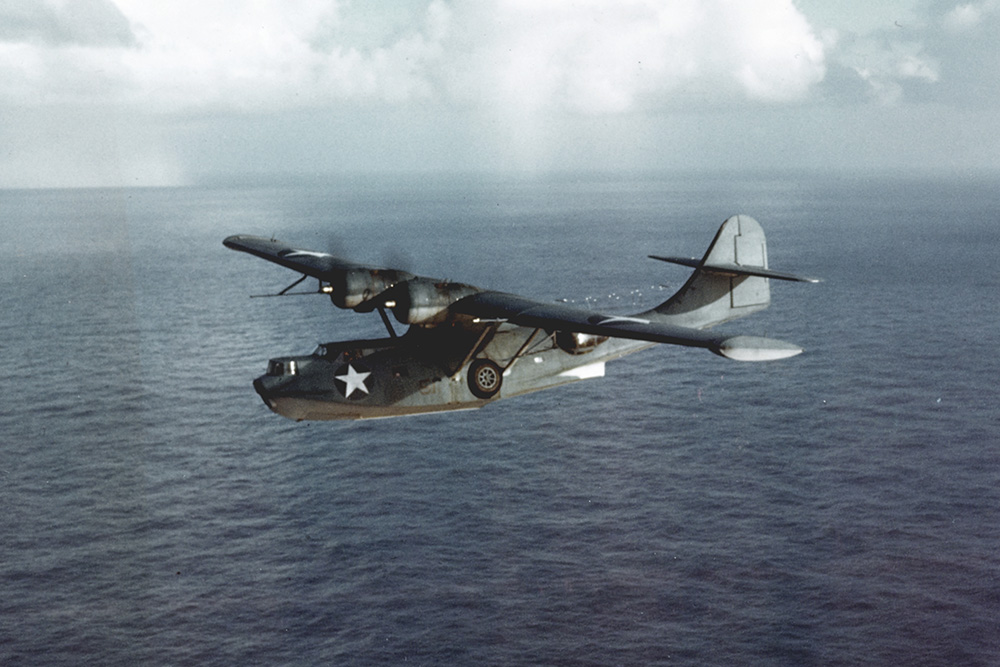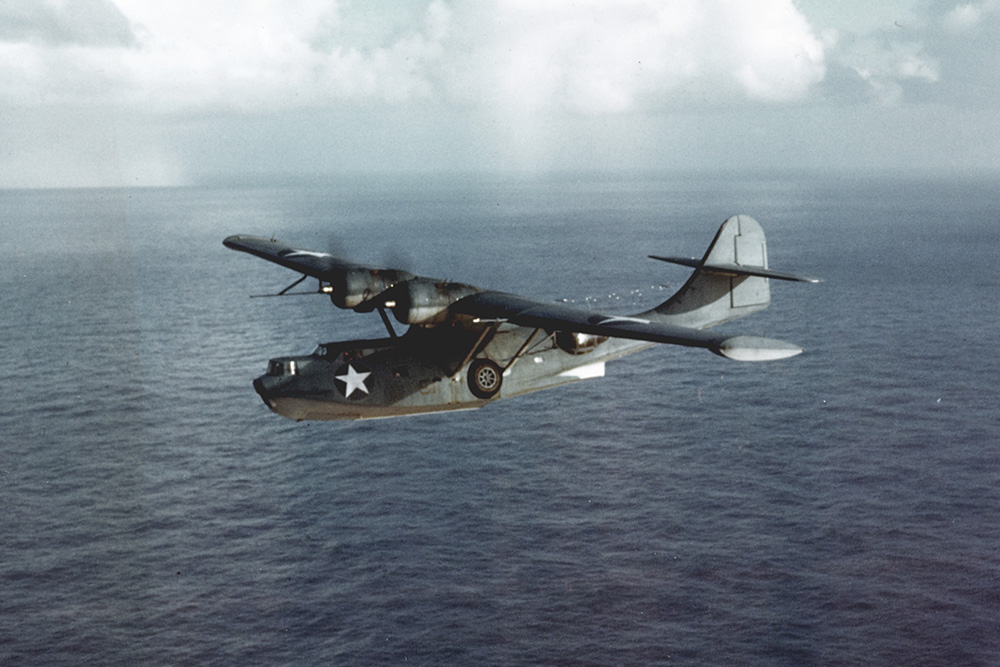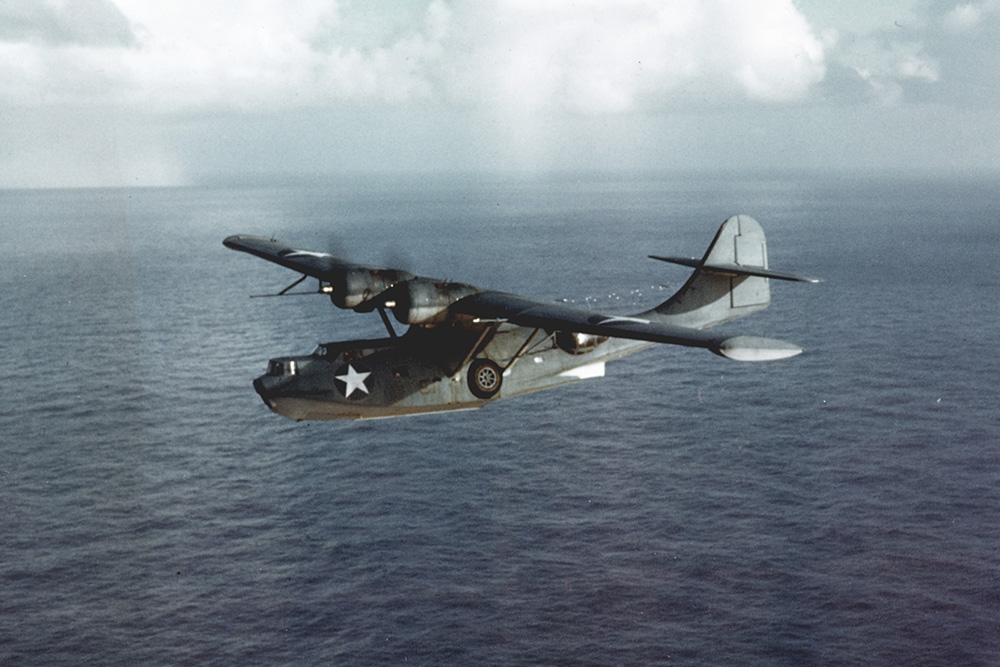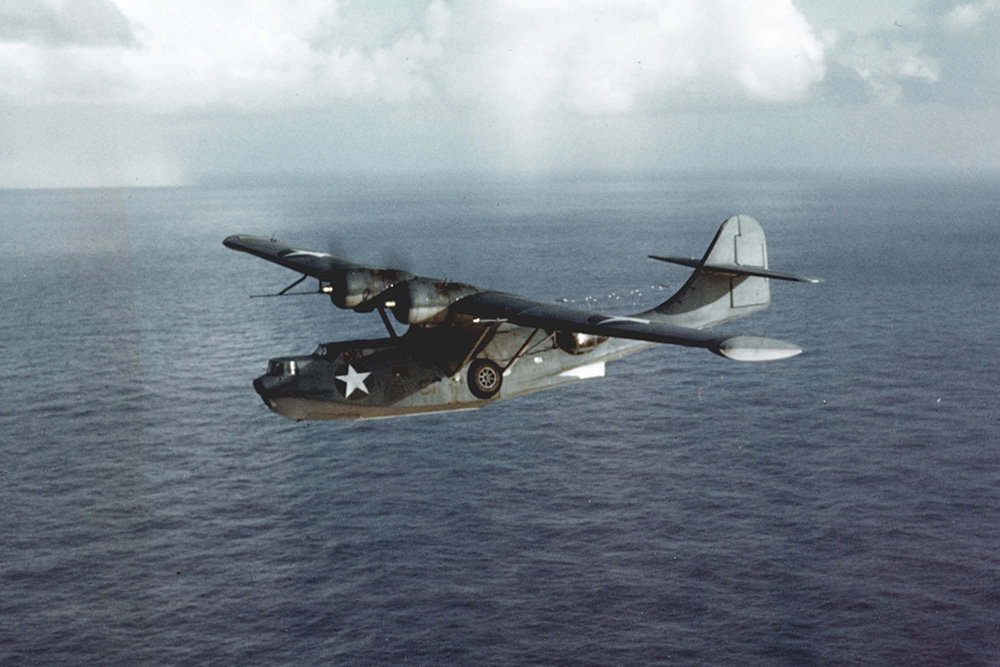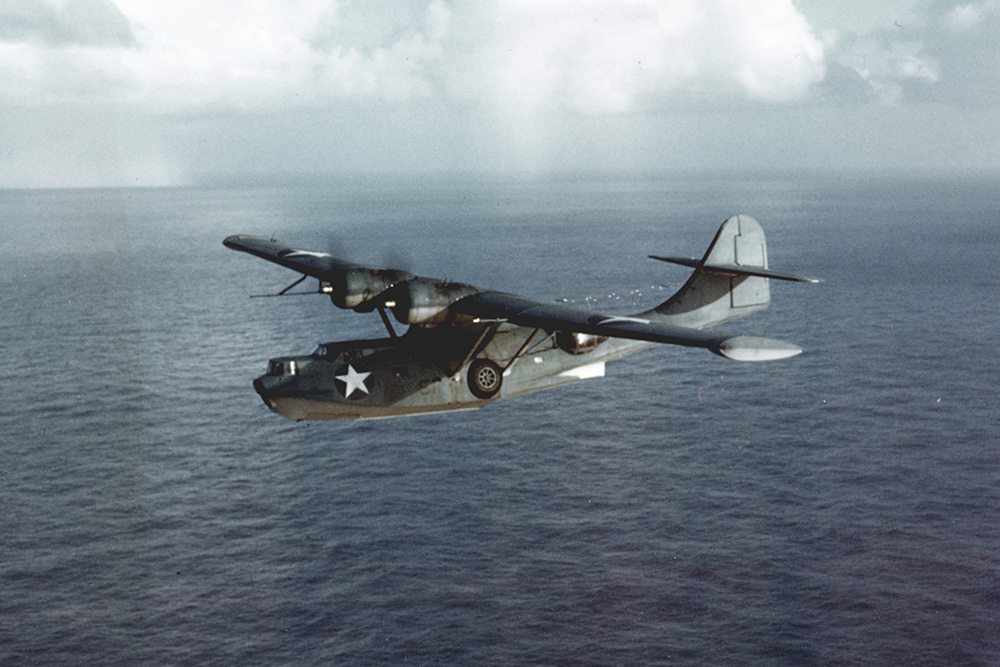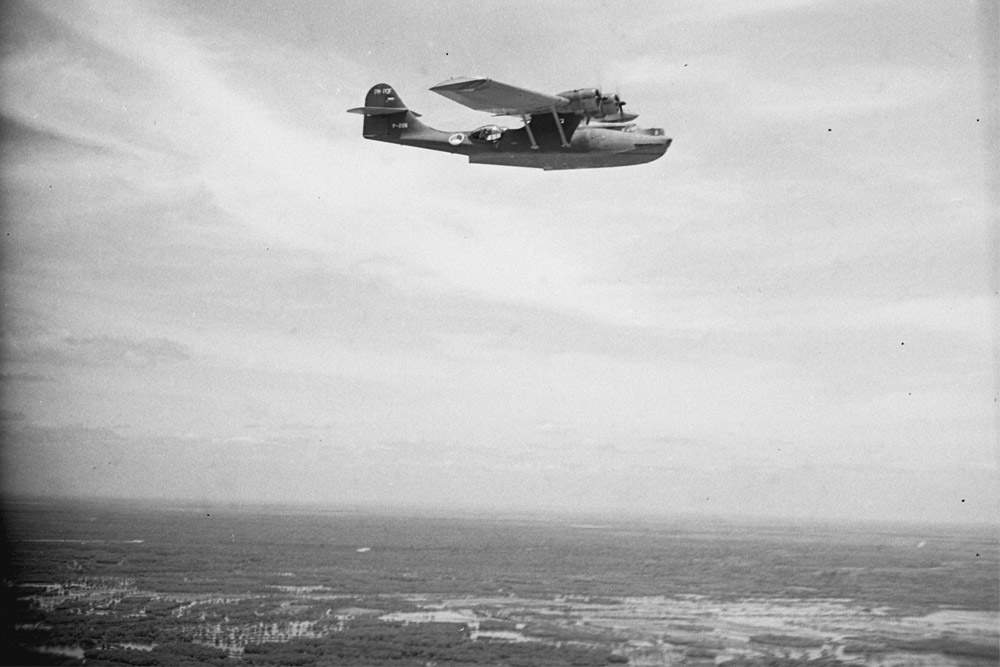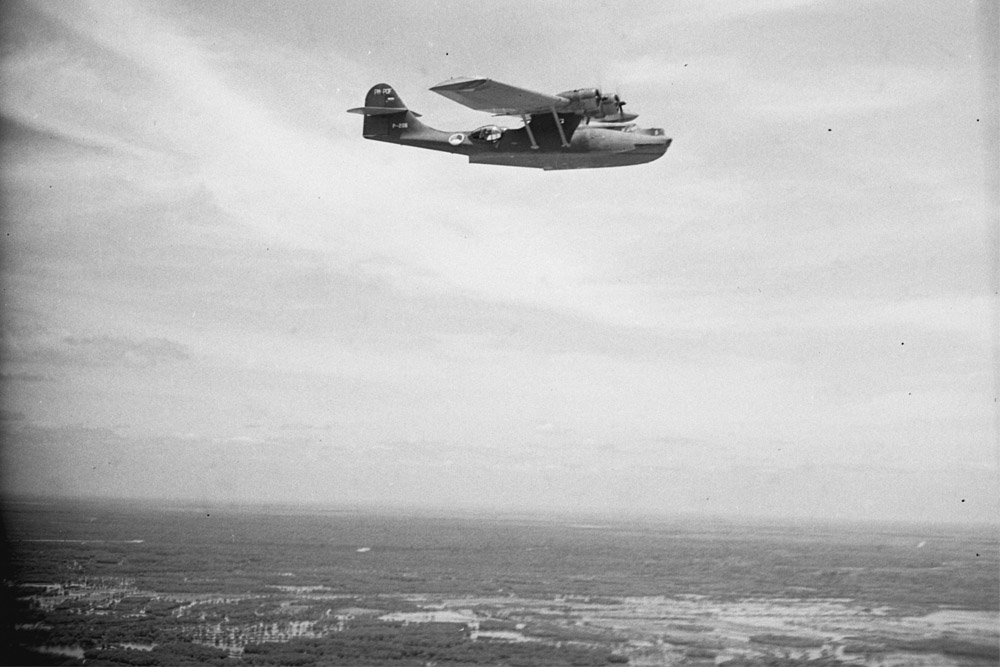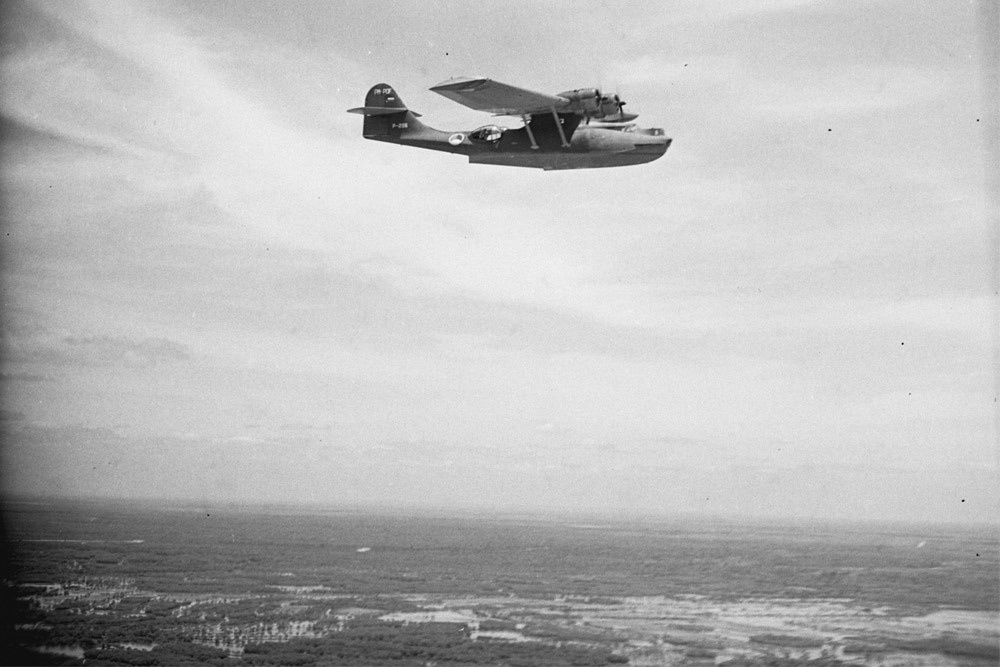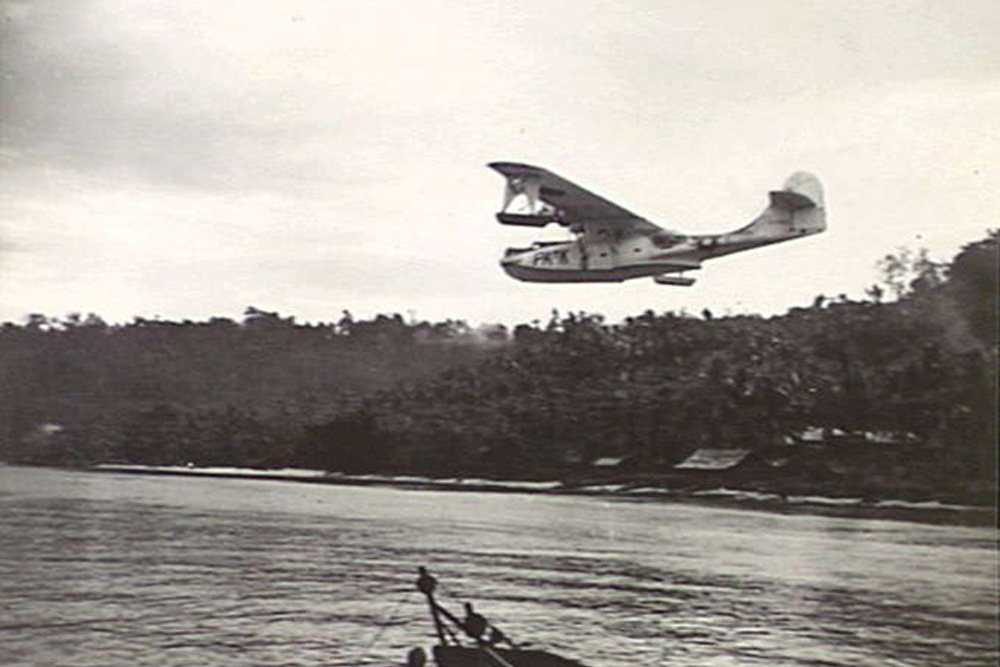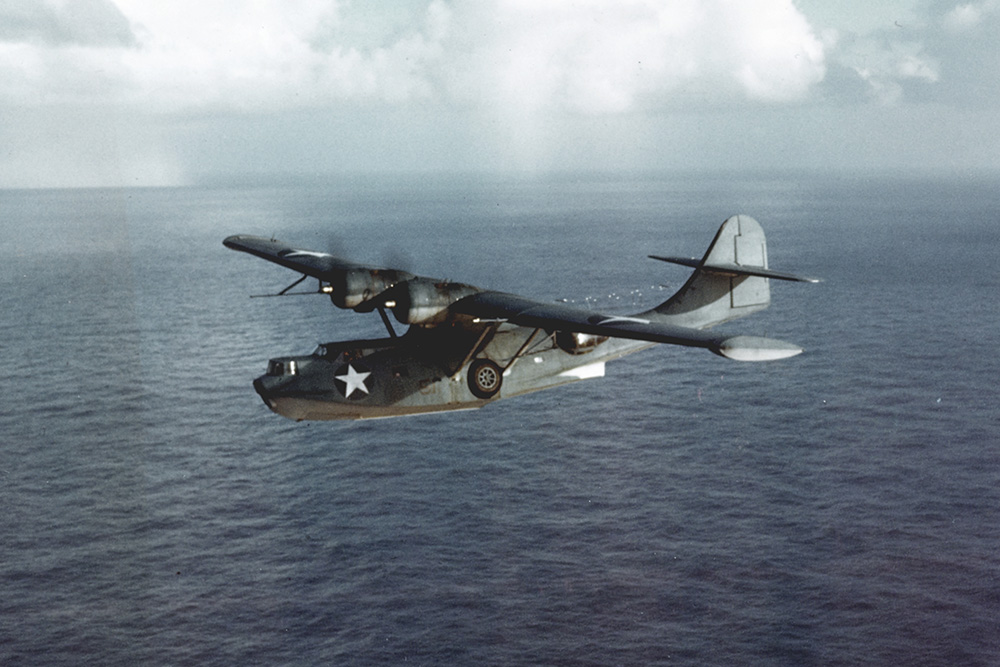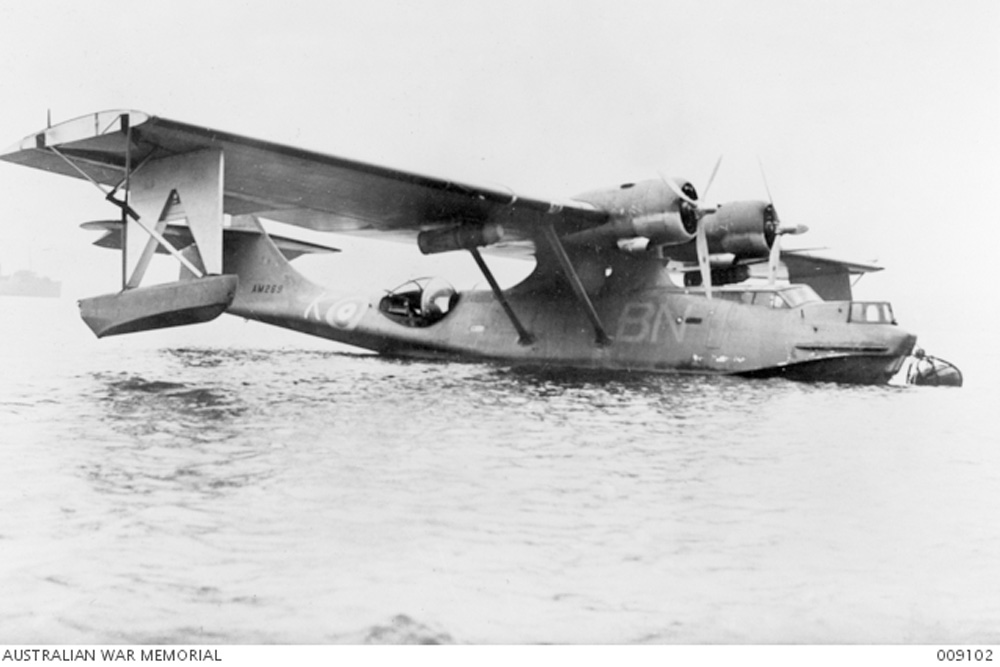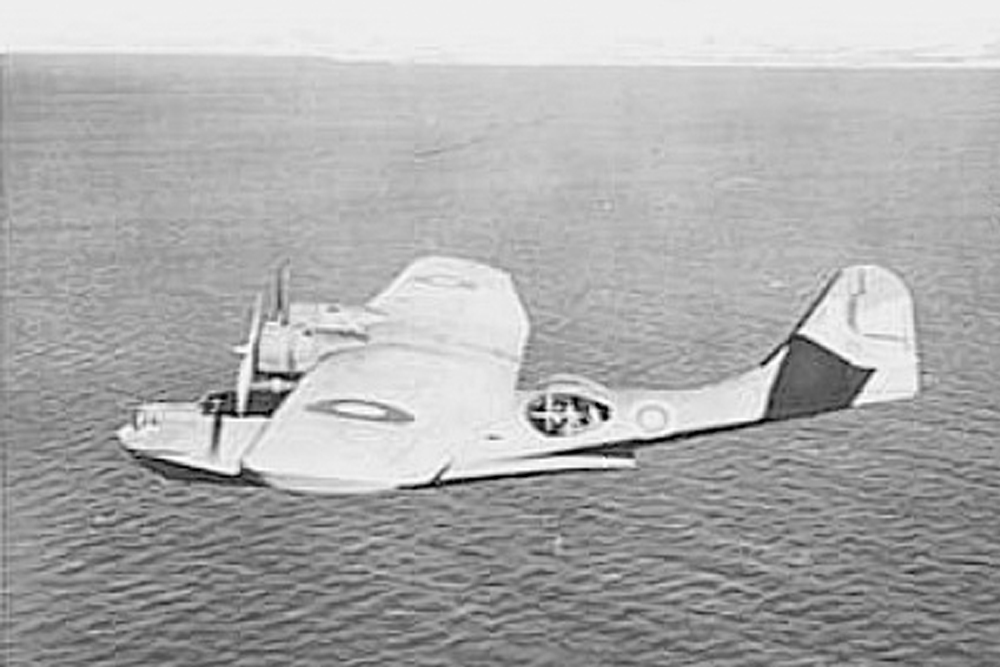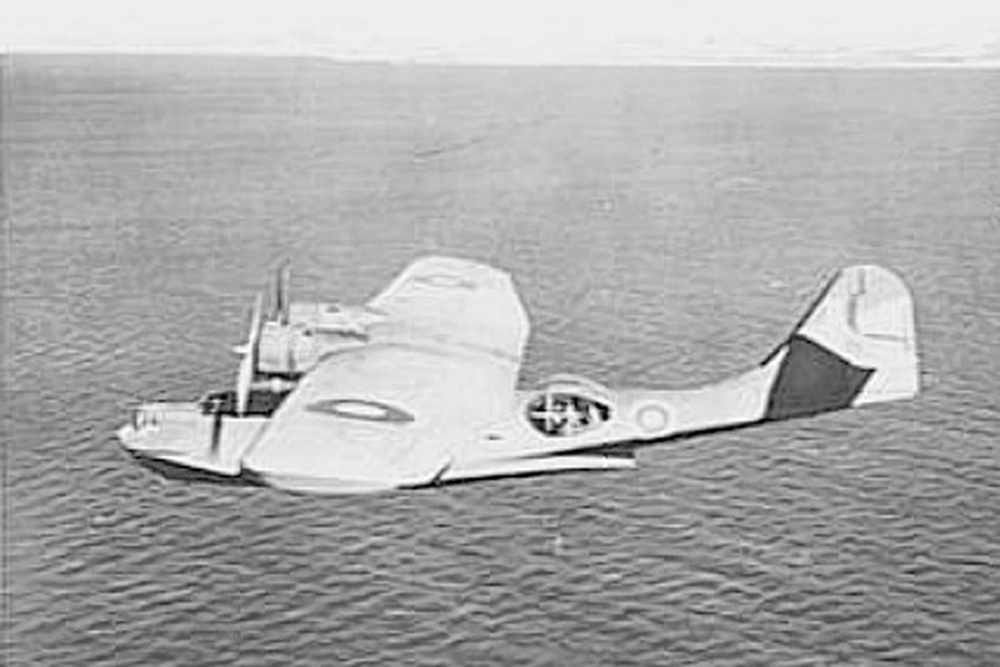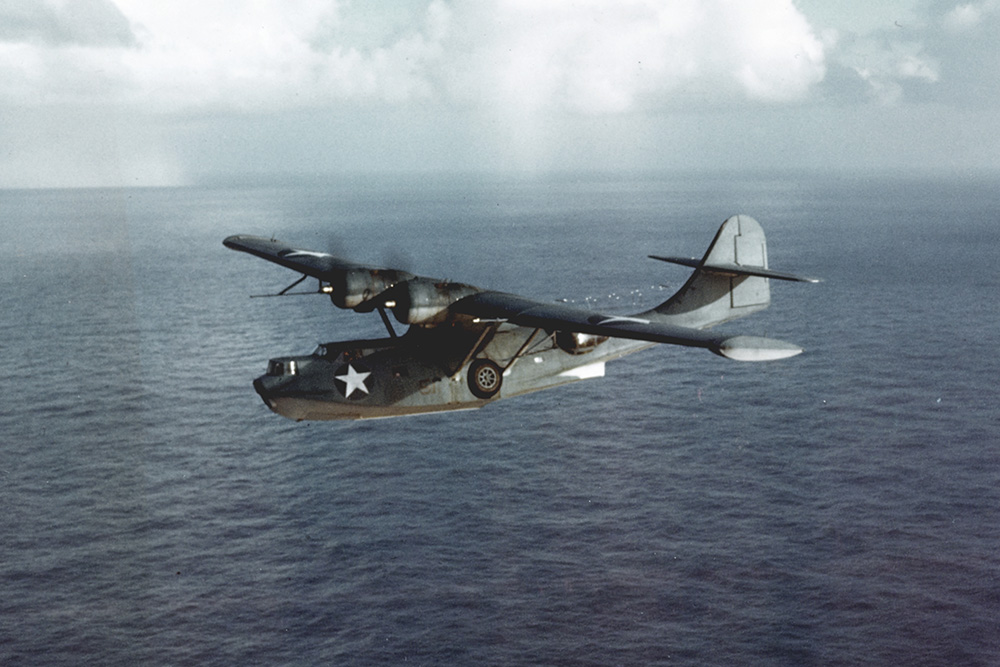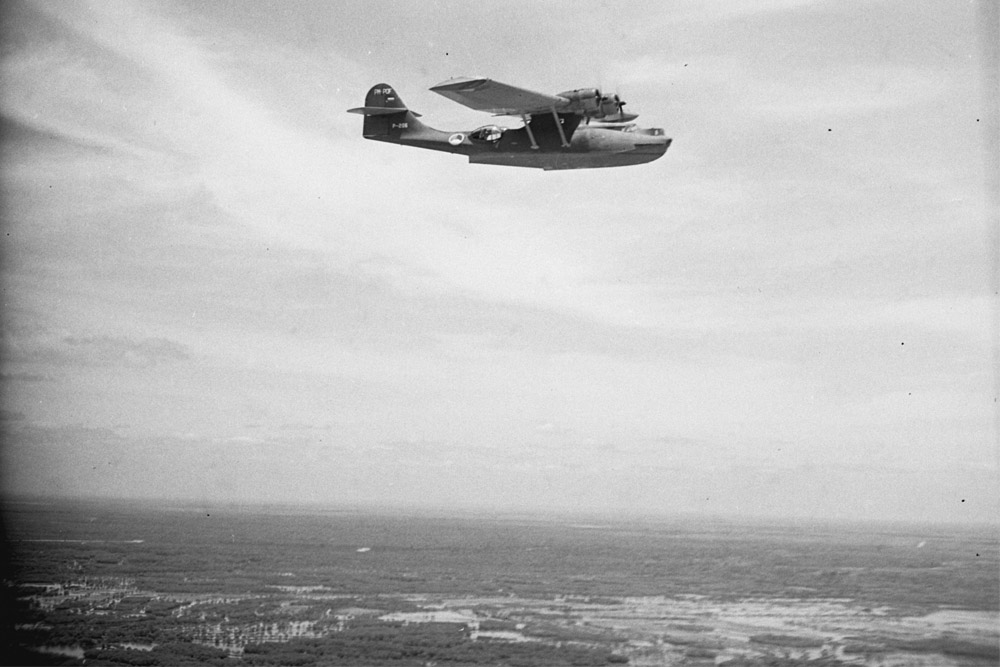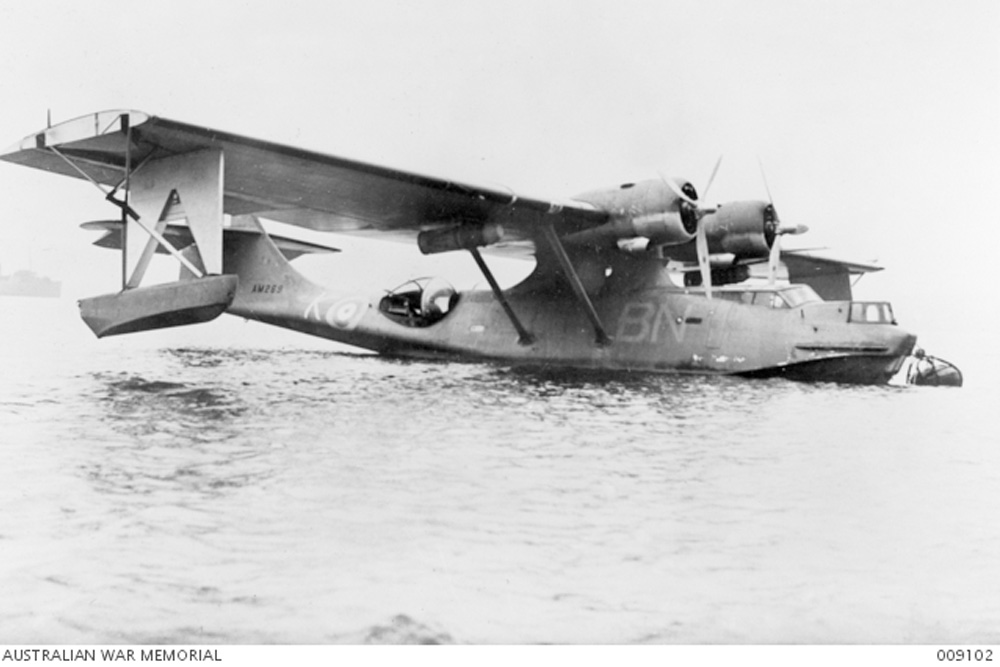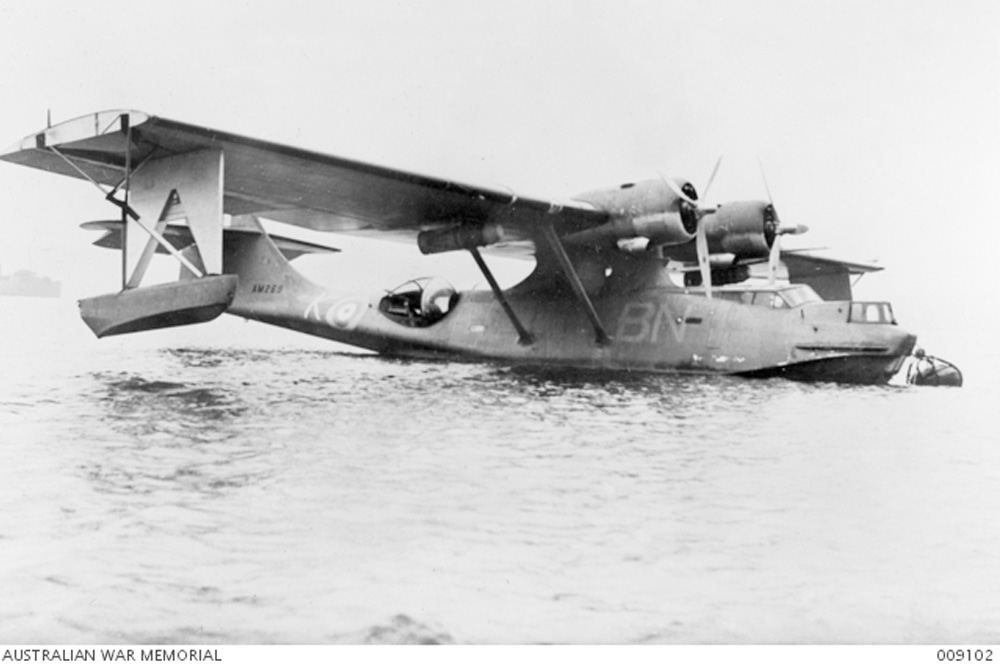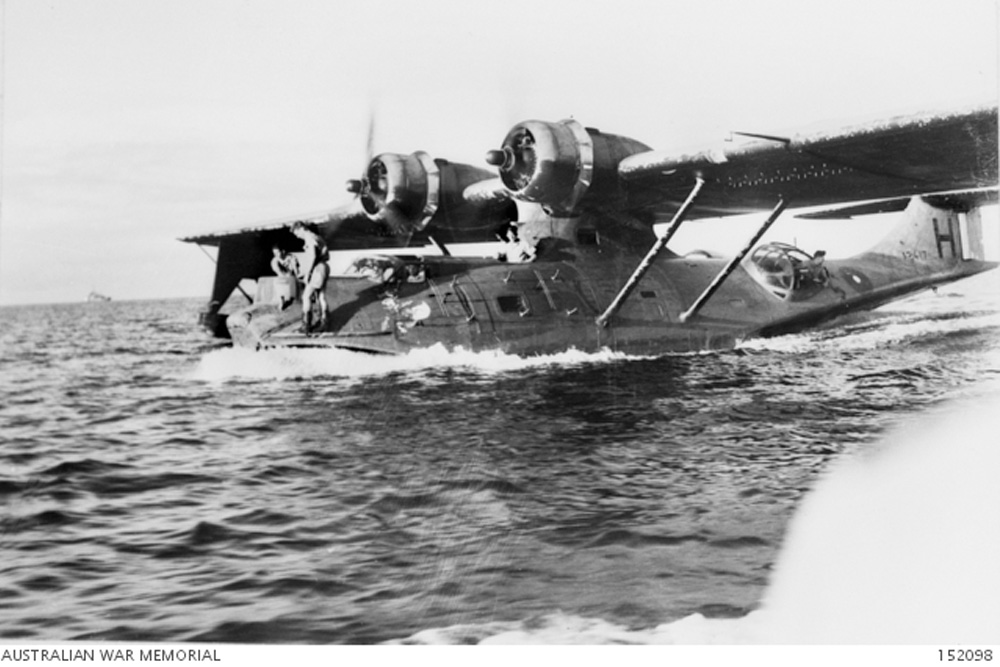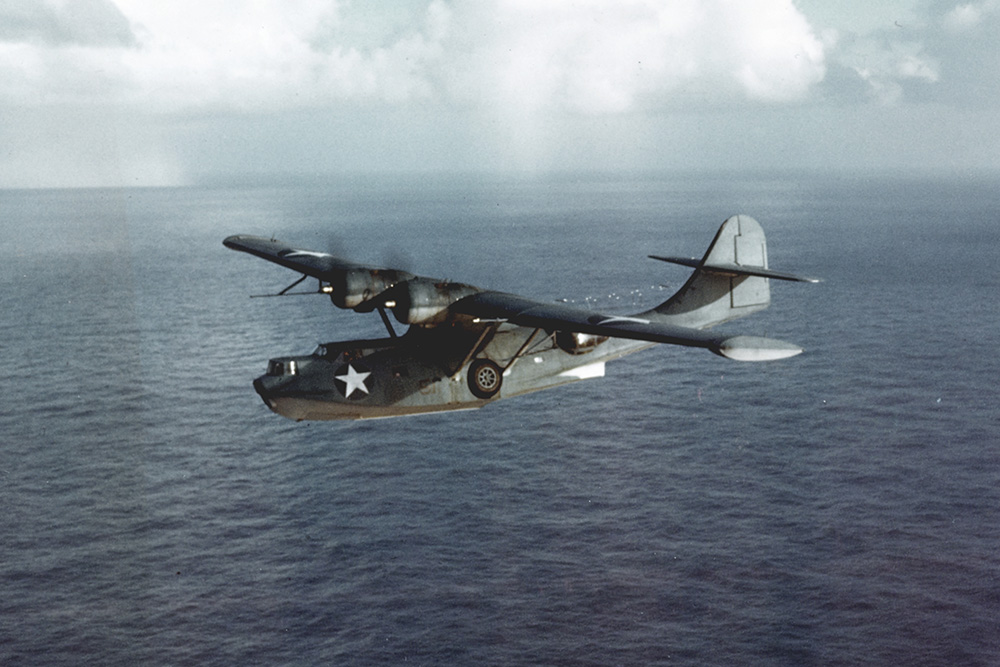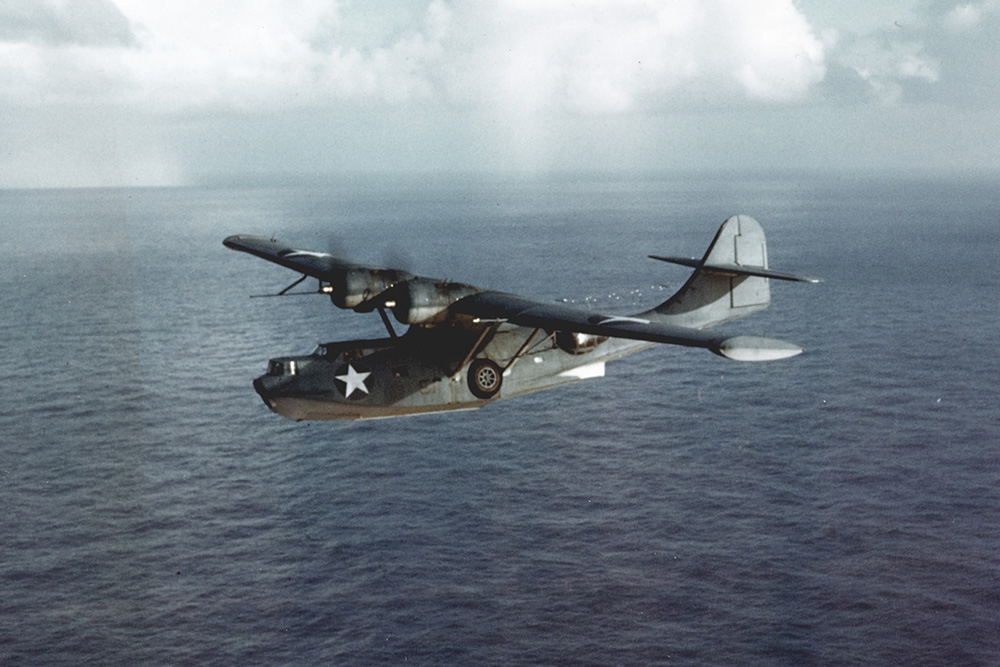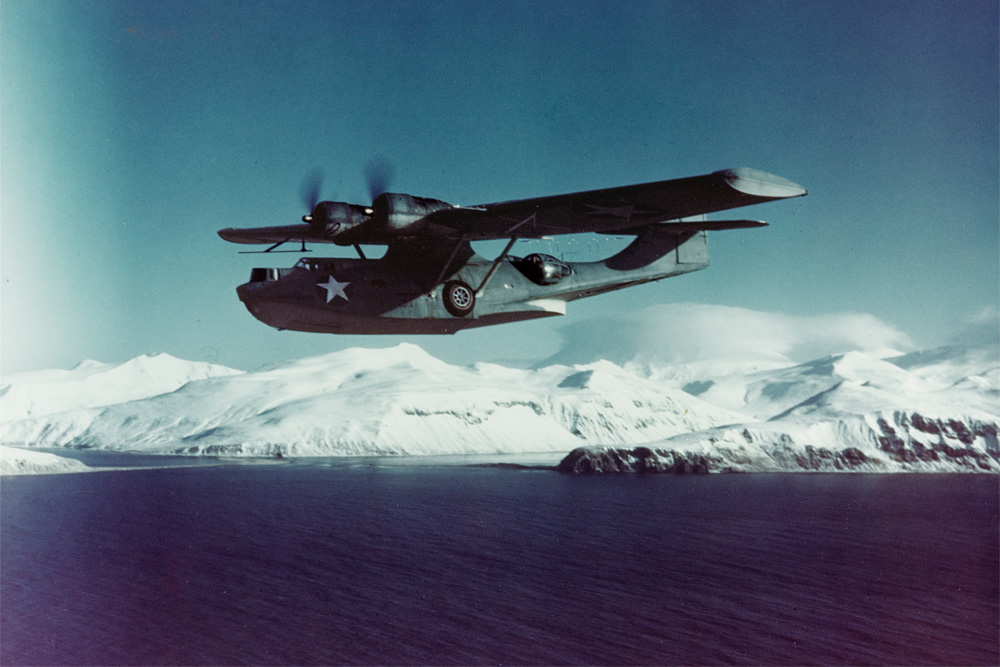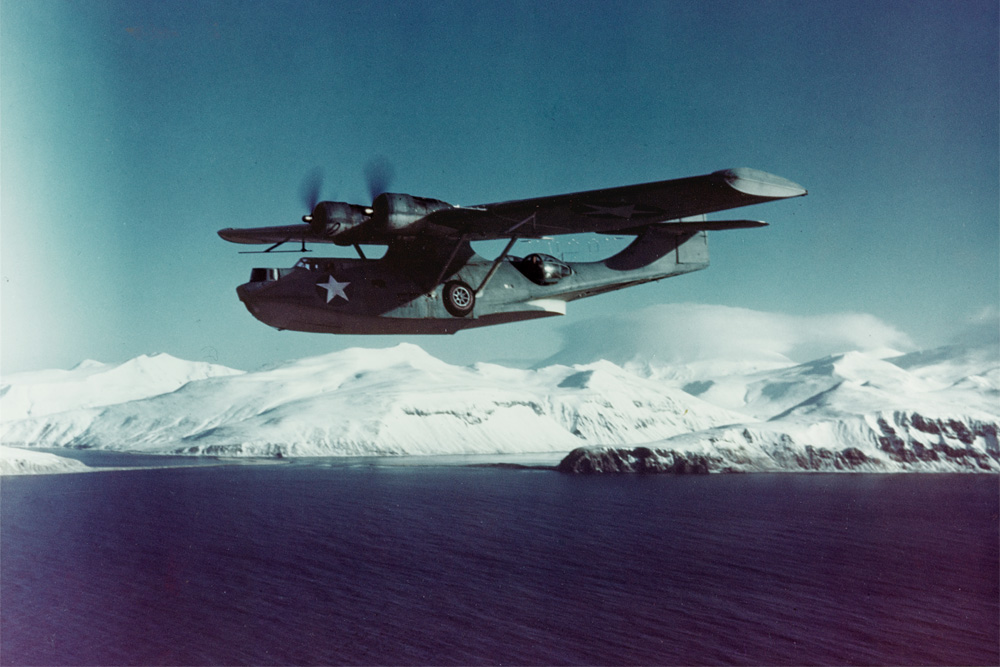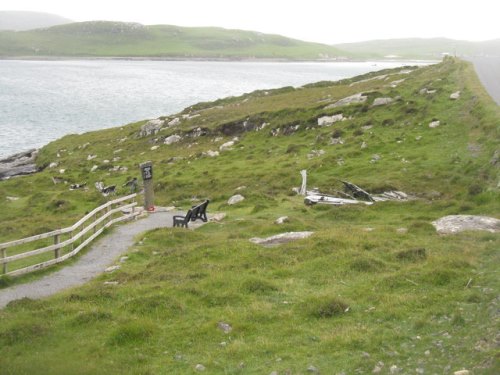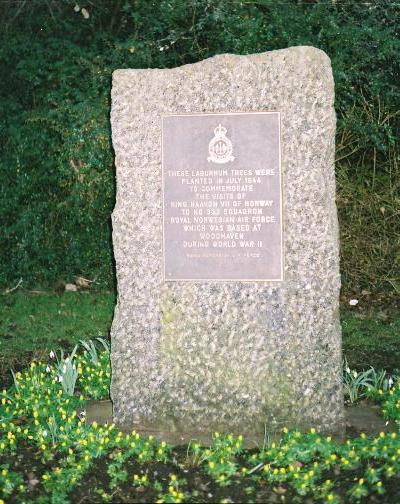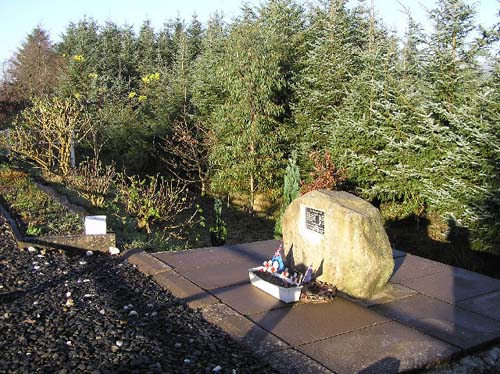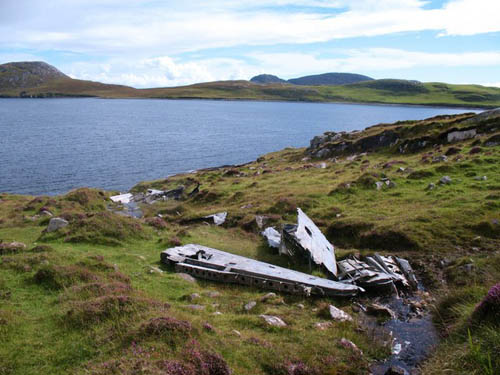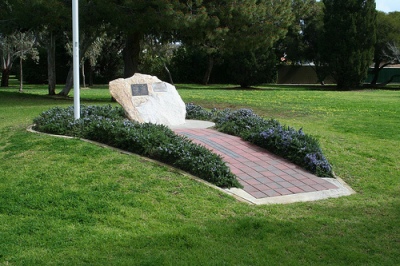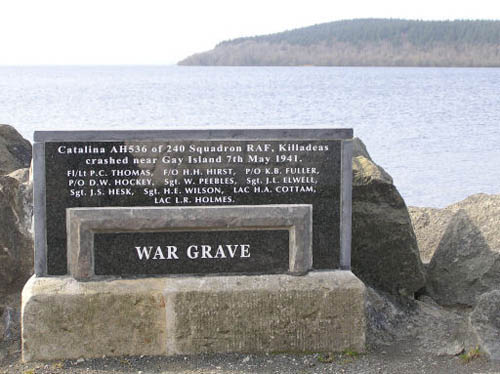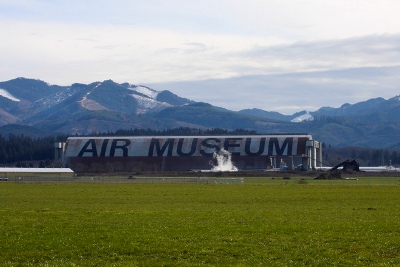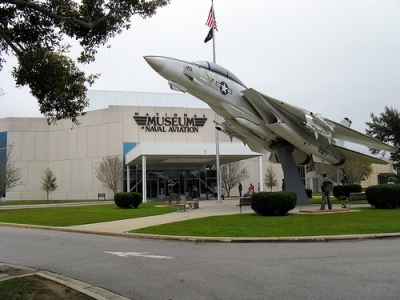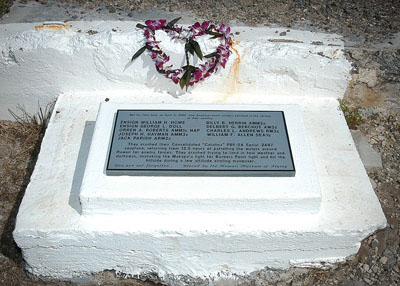Introduction
No other flying boat has become so well-known and popular as the Consolidated Catalina. Many navies and air forces of various countries have flown the type until long after the war. Even before the entire world was dragged into the conflict in December 1941, various countries had discovered the merits of this aircraft. Although it was a slow plane for its time, the Catalina has gained enormous familiarity and popularity by its diversity, simplicity and ease of handling which lasts until this day. A total of 3,290 Catalinas has been constructed, spread over various models and constructed by many factories. During the war, the Catalina saw action on every battlefield.
Development
In early 1933, the designers of the Consolidated Model 9 (better known as the P2Y) came to understand that a more efficient design of the structure of a flying boat was the only way to achieve better performance. The designs were drafted in response to a specification by the US Navy for a maritime patrol flying boat. Based on two designs, the four-engine XP3Y-2 and the twin-engine variant, the XP3Y-A, they achieved a revolutionary design, using an all-metal construction without tension wires for the wing. The main incentive was to produce an aircraft capable of carrying a much larger payload over a much greater distance than its predecessors. A highly aerodynamic design came into being, propelled by two Pratt & Whitney 900hp R-1830 Twin Wasp engines, a closed cockpit, downwards folding wingtips serving as stabilizing floats, able to carry a bombload of up to 2,000lbs and armed with four 7.63mm Browning machineguns.[1]
The US Navy was highly impressed and ordered a prototype that was to enter the competition with the Douglas XP3D-1. The prototype, XP3Y-1 made its maiden flight in 1935, propelled by two Pratt & Whitney 825hp R-1830-54 engines. Despite a few minor problems, the prototype met all expectations. The minor problems were solved by installing other engines (Pratt & Whitney 900hp R-1830-64) and a different tailplane. This proved to be the design of an excellent patrol flying boat. At that moment, it still was a real flying boat without the characteristic 'blisters' at the rear on either side of the hull. Later on the fuselage was entirely equipped according to the PBY-1 standard and reentered service in May 1936 as XPBY-1.
Overview of types
| Type | Details | Produced |
| XP3Y-1 | prototype USN Bureau No. 9459 | 1 |
| XPBY-1 | prototype US Navy | 1 |
| PBY-1 (Model 28-1) | produktion version R-1830-64 | 60 |
| PBY-2 (Model 28-2) | production version gewijzigde apparatuur | 50 |
| Amtorg GST | licentiemodel PBY-2 Sovjet-Unie | ? |
| PBY-3 (Model 28-3) | production version R-1830-66 motoren | 66 |
| PBY-4 (Model 28-4) | production version R-1830-72 | 33 |
| PBY-5 (Model 28-5)/Catalina I/ Catalina IVA | production version R-1830-82 of -92 | 683 |
| XPBY-5A | prototype amfibious version | 1 |
| PBY-5A (Model 28-5A)/Catalina IIIA/OA-10 | amfibious PBY-5 | 803 |
| PBY-5R | staff transport version | ? |
| PBY-6A/OA-10B | adapted amphibious version | 175 |
| PBY-6AG | PBY-6A US Coast Guard staff transport | 1 |
| Boeing Canada PB2B-1 | Boeing versie PBY-5 | 240 |
| Boeing Canada PB2B-2/Catalina VI | version PBY-5 with larger tailplane | |
| Naval Aircraft Factory PBN-1 Nomad/CatalinaV/KM-1 | NAF version PBY-5 | 155 |
| Canadian Vickers PBV-1A /Canso-A/OA-10A | Vickers variant PBY-5A | 380 |
| RAF designation: | |||
| Type | Original | Produced | |
| Catalina I | PBY-5 | 109 | |
| Catalina IA | Canso RCAF | 4 | |
| Catalina IB | Lend-Lease PBY-5A RAF | 225 | |
| Catalina II | PBY-5 altered equipment | 6 | |
| Catalina IIA | Vickers Canada Catalina II RAF | 50 | |
| Catalina IIIA | US Navy PBY-5A RAF | 12 | |
| Catalina IVA | Lend-Lease PBY-5 RAF | 93 | |
| Catalina IVB | Lend-Lease PB2B-1 RAF/RAAF | ? | |
| Catalina VI | Lend-Lease PB2B-2 RAF/RAAF | ? |
Definitielijst
- Browning
- American weapon’s designer. Famous guns are the .30’’ and .50’’ machine guns and the famous “High Power” 9 mm pistol.
PBY-1 (Model 28-1)
In June 1935, 60 PBY-1 (Model 28-1) were ordered. Offensive armament consisted of two suspension points beneath each wing to accommodate two Mk XIII torpedoes. The designation PBY was chosen because of the original role of patrol bomber. The PBY-1 was propelled by two Pratt & Whitney 900hp R-1830-64 engines.
The first aircraft was delivered to flying boat patrol unit VP-11F on October 5, 1936. In 1937. VP-12 became the second unit to be equipped with the PBY-1. At the outbreak of hostilities, most PBY aircraft were still in service in patrol and training units. Due to the delivery of later models, they were often relegated to a supporting role. At the time of the Japanese attack on Pearl Harbor, December 7, 1941, out of the 74 flying boats on the base, only two were of the PBY-1 type.[2]
Technical data
| Type | PBY-1 (Model 28-1) |
| Task | Reconnaissance, bomber |
| Crew | 6 to 9 |
| Wingspan | 104ft |
| Wing surface | ? |
| Length | 63ft |
| Height | 18ft |
| Weight | Empty ?, max 20,666lbs |
| Propulsion | 2 950 hp Pratt & Whitney R-1830-64 |
| Speed | Max 184mph, cruise ? |
| Range | ? |
| Ceiling | 23,596ft |
| Armament | 4 7.63 Browning machineguns |
| Bomb load | 2,000lbs |
| Produced | 60 |
Definitielijst
- Browning
- American weapon’s designer. Famous guns are the .30’’ and .50’’ machine guns and the famous “High Power” 9 mm pistol.
- Offensive
- Attack on a smaller or larger scale.
PBY-2 (Model 28-2)
Delivery of the renewed PBY-2 to VP-11 started in May 1937. These aircraft had been ordered in July 1936. The main alterations could be found in the construction of the tail, the possibility to carry four 1,000lbs bombs beneath each wing and the replacement of the two side-mounted 7.62 machineguns by 12.7 Brownings.
Technical data
| Type | PBY-2 (Model 28-2) |
| Task | Reconnaissance, bomber |
| Crew | 6 to 9 |
| Wingspan | 104ft |
| Wing surface | 1,400ft2 |
| Length | 65ft |
| Height | 19ft |
| Weight | Empty 14,568, max 28,640lbs |
| Propulsion | 2 Pratt&Whitney 950hp R-1830-64 |
| Speed | Max 177, cruise 105mph |
| Range | 2,131 miles |
| Ceiling | 21,000ft |
| Armament | nose 1 7.62 Browning |
| Tail hatch | 1 7.62 Browning |
| Side hatch | 1 12.7 Browning either side |
| Bombload | 4,000lbs |
| Produced | 50 |
Definitielijst
- Browning
- American weapon’s designer. Famous guns are the .30’’ and .50’’ machine guns and the famous “High Power” 9 mm pistol.
Amtorg GST
When halfway through the 30s the Soviets were looking for a replacement for their obsolete Beriev MBR-2 flying boats, they found out that their technical knowledge lagged far behind other countries. In order to improve knowledge, several American flying boats were bought and tested. Not one of them sufficiently matched their requirements. This situation changed only when in 1938 in the United States, the Catalina was released for export. Three unarmed PBY-2 aircraft with Pratt&Whitney R-1830-64 engines were imported and the state-owned company Amtorg obtained license rights.
These three planes were not the first Catalinas to enter Soviet service though. In order to track down a lost North Pole expedition, the Soviet government had requested an owner of a Catalina, (a civil PBY-1, the Guba) Dr, Richard Archbold, to take over his PBY. The plane entered Russian service as L-2 and in the summer of 1938, it was equipped with military hardware. Four 7.62 SHKAS machineguns were installed. This L-2 had a sort of cupola shaped windows at the rear of the fuselage, so-called blisters, the first Catalina to have them which made later Catalinas so famous. The L-2 served in the Russian air force until it was destroyed by AA fire of a U-boat on July 25, 1942.
The three other planes were tested and declared suitable Soon, production was started and the aircraft was named GST (Gidro Sanolyet Transportnyi). The GST was based entirely on the PBY-2 which makes it a direct descendant of the type. The aircraft was propelled by engines, comparable to those of the legendary Polikarpov I-16 fighters, (Mikulin M-25), the Mikulin M-62, adapted for use in flying boats. These engines were in fact 950hp Wright Cyclone engines built under license. Apart from the military GST, a civil transport version was produced, the MP-7 propelled by two 850hp Mikulin M-62IR engines.
The first GST was delivered at the end of 1939. It is unknown how many aircraft have been produced but estimates vary between 200 and a little under 1,000. The planes were entirely licensed aircraft so they were fitted with Russian armament and equipment. Unlike the L-2 however, the GST wasn't equipped with the later so characteristic blisters.
The Soviets used the GSTs and MP-7s very extensively. Little is known about their operations. One plane fell in British hands when a Russian sailor defected and flew the aircraft all the way from Sebastopol to Cyprus. The plane was taken into service by the RAF. The Soviets have deployed these planes in all areas of operation as bomber, reconnaissance and rescue aircraft.
Technical data
| Type | Amtorg GST |
| Task | Reconnaissance, bomber |
| Crew | 9 |
| Wingspan | 104ft |
| Wing surface | 1,400ft2 |
| Length | 63ft |
| Height | 19ft |
| Weight | Empty 14,705, max 21,605lbs |
| Propulsion | 2 Mikulin M-62 950hp |
| Speed | Max 250mph, cruise ? |
| Range | 2131 miles |
| Ceiling | 21,100ft |
| Armament | 4 7.62 SHKAS machineguns |
| Bombload | ? |
| Produced | ? |
Definitielijst
- RAF
- Royal Air Force. British air force
- U-boat
- The German name for a submarine. German U-Boats (Submarines) played a very important role during the course of warfare until May 1943. Many cargo and passenger ships were torpedoed and sunk by these assassins of the sea.
PBY-3 (Model 28-3)
PBY-4 (Model 28-4)
The PBY-4 was to be the first aircraft equipped with the characteristic side blisters. The first units though were still equipped with side hatches for observation. The contract for this series was signed on December 18, 1937. Based on this, 33 PBY-4s were ordered which would be propelled by two Pratt&Whitney 1050hp R-1830-72 Twin Wasp engines. This version was the only one with spinner hubs.
PBY-5 (Model 28-5)/Boeing PB2B-1/Catalina I , II, IVA
The first Model 28-5 aircraft were delivered in October 1941. From this version on, the name Catalina was officially adopted. In December 1939, the US Navy ordered no less than 200 planes. This was its largest order ever for such a large aircraft. The version was originally intended for planned neutrality patrols.
The PBY was equipped with an entirely revised tail section, additional fuel capacity and was propelled by two 1,200 Pratt&Whitney R-1830-82 and later with -92 engines. It still was a genuine flying boat. The first aircraft were delivered in September 1941. At the end of 1941, a sufficient number had been produced to equip no less than 16 squadrons with this plane. Out of the 200 ordered, 167 were eventually delivered as PBY-5. The remaining 33 were delivered as the new PBY-5A amphibious versions.
In June 1940, the Royal Australian Air Force (RAAF) had ordered an initial batch of seven PBY-5s. The RAF also ordered a large number of these aircraft. The British PBY-5 was designated Catalina Mk I and II. For evaluation purposes, the British had first taken over a Model 28-5. Although the testing program had been interrupted by the outbreak of war in September 1939, the Catalina was accepted nonetheless as the standard seaplane for Coastal Command. The first batch of 50 aircraft was designated Catalina Mk I. Early 1941, the first planes entered service with Nos. 209 and 240 Squadron. A total of 109 aircraft of the series Catalina Mk I was received. Out of these, 30 were actually Consolidated Model 28-5 MF destined for France but which could not be delivered due to the German invasion.
Out of this batch of 109, 19 were delivered to the RAAF and 6 to the Royal Canadian Air Force (RCAF). This left 85 for the RAF. The British planes were identical to the PBY-5 but were mostly armed with 7.7mm Vickers machineguns and powered by two Pratt&Whitney 1200hp R-830-SIC3-G engines. Naturally they were equipped with British hardware. Based on the experiences in combat, the British planes were also equipped with self-sealing fuel tanks and armor plating for the crew. Six PBY-5 of a slightly different configuration were delivered to the RAF as Catalina Mk II. The RCAF was to receive 36 Model 28-MC aircraft which were eventually delivered to the RAF as Catalina Mk II. At the end of the day, another 97 PBY-5 aircraft would be delivered to the RAF as Catalina Mk IVa in accordance with the Lend-Lease Agreement.
Boeing Canada built the PBY-5 under license. These planes were delivered as PB2B-1. The first aircraft rolled off the production line in March 1943. A total of 240 aircraft were built of which 193 were delivered under Lend-Lease to RAF, RAAF and RNZAF as Catalina Mk IVB. Three of these were converted to transport aircraft and handed over to BOAC. Some were configurated as Air/Sea Rescue and entered service as ASR Mk IVB. Between July 1944 and February 1945, the Royal Dutch Navy hired six of these planes from the RAF as Y-88 to Y-93.
In October 1940, the Dutch East-Indian government ordered 49 type PBY-5s. Prior to the outbreak of war in the Pacific, 36 were delivered between September 1941 and January 1942 with the registration Y-36 to Y-73.
Technical data
| Type | PBY-5 (Model 28-5) |
| Task | Reconnaissance, bomber |
| Crew | 9 |
| Wingspan | 104ft |
| Wing surface | 1400ft2 |
| Length | 64ft |
| Height | 19ft |
| Weight | Empty 17,527, max 22,847lbs |
| Propulsion | 2 Pratt&Whitney 950hp R-1830-64 |
| Speed | Max 164, cruise 100mph |
| Range | 3,000 miles |
| Ceiling | 18,094ft |
| Armament | |
| Nose turret | 1 7.62 Browning machinegun |
| Tail hatch | 1 7.62 Browning |
| Side hatches | 2 7.62 Browning |
| Bombload | 4,000lbs |
| Produced | 683 |
Definitielijst
- Browning
- American weapon’s designer. Famous guns are the .30’’ and .50’’ machine guns and the famous “High Power” 9 mm pistol.
- invasion
- Armed incursion.
- neutrality
- Impartiality, absence of decided views, the state of not supporting or helping either side in a conflict.
- RAF
- Royal Air Force. British air force
- Squadron
- A military unit in the Belgian navy usually six to eight small ships operating together under one command. The smallest military unit in the Dutch air force of about 350 men. In most countries is the designation of a military unit thesize of a company. It is either an independent unit, such as a battery, or part of a bigger Calvary unit. In the air force it is the designation of a unit of aircrafts.
PBY-5A (Model 28-5A)/Catalina IIIA/OA-10/OA-10A/Canso
In order to achieve a better operational deployment of the Catalina, a PBY-4 was returned to the factory in 1939 to be converted to an amphibious aircraft. To this end, the plane was fitted with a retractable nosewheel and foldable main gear. The XPBY-5A made its maiden flight in November 1939 and it was an immediate success. As a result, the last 33 of the first batch of PBY planes still under construction were completed as PBY-5A amphibious aircraft. In November 1940, another 134 were ordered to reach a total of 627 in 1942.
The PBY-5A carried less armor plating than her predecessors, mainly to compensate the extra weight of the landing gear. Beginning with the 125th aircraft, the single gun in the bow turret was replaced by two.
In particular for use in the cold north by the RCAF, 14 planes were modified and delivered as Catalina Mk 1A. In Canada however, the aircraft was known as the Canso. The Canadian branch of Boeing started building the aircraft on its own, The first series, the Boeing Canada Canso A was assembled with American components. The first aircraft took to the air in July 1942. These were followed in the same way by 139 units at Canadian Vickers however.
Especially for the RAF, 225 PBY-5A, without amphibious adaptations though, were produced for use in Great Britain. They were designated PBY-5B or Catalina Mk IB. Two of them were handed over to BOAC as civil transport planes.
Twelve American PBY-5As were made available to the RAF as Catalina Mk III. They were intended to carry pilots between Great Britain and the US by way of the so-called North Atlantic Ferry Route.
The Dutch Navy also received the amphibious PBY-5A. Between September and November 1942, 12 aircraft (Y-74 to Y-85) were delivered, followed in May 1943 by another two, Y-86 and Y-87. The planes that survived the Japanese invasion of the Dutch East-Indies formed the nucleus of No. 321 Squadron based on Ceylon (today Sri Lanka).
The PBY-5A was also delivered to the American Army Air Force, USAAF. It received 56 from the navy which entered service as from 1942 as OA-10 Air-Sea Rescue.
The Canadian Vickers factory built 230 PBY-5As, designated PBV-1A for the US Navy. Most of them however went to the USAAF as OA-10A. The RAAF received 46 PBY-5As. Twenty-nine were converted back to normal flying boats by removing the landing gear. These were designated PBY-5A(M).
During the war in the Pacific, American and Australian Catalinas, painted entirely black, gained fame by carrying out all sorts of special operations. These units were known as the Black Cat Squadrons.
Technical data
| Type | PBY-5A (Model 28-5A) |
| Task | Reconnaissance, bomber |
| Crew | 9 |
| Wingspan | 104ft |
| Wing surface | 1,400ft2 |
| Length | 64ft |
| Height | 19ft |
| Weight | Empty ?, max ? |
| Propulsion | 2 1,200hp Pratt&Whitney R-1830-92 |
| Speed | Max 156, cruise 93mph |
| Range | 2,545 miles |
| Ceiling | 14,700 |
| Armament | |
| Nose turret | 2 7.62 Browning |
| Hatch | 1 7.62 Browning |
| Either side | 2 12.7 Browning |
| Bomb load | 4,500lbs |
| Produced | 803 |
Definitielijst
- Browning
- American weapon’s designer. Famous guns are the .30’’ and .50’’ machine guns and the famous “High Power” 9 mm pistol.
- invasion
- Armed incursion.
- RAF
- Royal Air Force. British air force
- Squadron
- A military unit in the Belgian navy usually six to eight small ships operating together under one command. The smallest military unit in the Dutch air force of about 350 men. In most countries is the designation of a military unit thesize of a company. It is either an independent unit, such as a battery, or part of a bigger Calvary unit. In the air force it is the designation of a unit of aircrafts.
PBN-1 Nomad/Catalina Mk V
The Naval Aircraft Factory took over part of the development which Consolidated could not handle due to the heavy pressure of production. Improvements were made to the aerodynamics, the hull was extended and the entire fuselage was reinforced. The nose turret was provided with a 12.7 machine gun.
Consolidated couldn't handle production so the NAF started building them. In this way, the PBN-1 Nomad was born. In July 1935, 155 aircraft were ordered which could only be delivered as late as February 1943. A number of them would be delivered to the RAF under Lend-Lease. Of these planes, 138 were eventually delivered to the Soviet Union. The US Navy itself received 17 aircraft.
Technical data
| Type | PBN-1 Nomad |
| Task | Reconnaissance, bomber |
| Crew | 9 |
| Wingspan | 104ft |
| Wing surface | 1,400ft2 |
| Length | 65ft |
| Height | 21ft |
| Weight | Empty 19,229 max 38,000lbs |
| Propulsion | 2 1,200 hp Pratt&Whitney R-1830-92 |
| Speed | Max 162, cruise 97mph |
| Range | 2,590 miles |
| Ceiling | 15,092ft |
| Armament nose | 1 12,7 Browning |
| Additional | 4 7.62 Browning |
| Produced | 155 |
Definitielijst
- Browning
- American weapon’s designer. Famous guns are the .30’’ and .50’’ machine guns and the famous “High Power” 9 mm pistol.
- machine gun
- Machine gun, an automatic heavy quick firearm.
- RAF
- Royal Air Force. British air force
- Soviet Union
- Soviet Russia, alternative name for the USSR.
PBY-6A/OA-10B/PB2B-2/Catalina Mk VI
The first plane of a new version was delivered in April 1944. Hereby, all adaptations applied to the PBN-1 Nomad were copied. The nose turret now housed two 12.7 Browning machineguns and a dome for the air-surface radar was fitted on the roof of the cockpit. The tail of the plane had been completely revised, making the aircraft a little longer.
Until the end of production in April, 1945, 175 planes were built. The US Navy made 65 PBY-6A aircraft available to the USAAF which designated them OA-10B. By the tested method of Lend-Lease, 61 type PB2B-2 were delivered to the RAF as Catalina GR. Mk I. Of these, 47 were handed over to the RAAF. The aircraft were built by Boeing Canada.
Notes
- Klaauw, 1977, p. 56
- Klaauw, 1977, p. 56
Definitielijst
- Browning
- American weapon’s designer. Famous guns are the .30’’ and .50’’ machine guns and the famous “High Power” 9 mm pistol.
- radar
- English abbreviation meaning: Radio Detection And Ranging. System to detect the presence, distance, speed and direction of an object, such as ships and airplanes, using electromagnetic waves.
- RAF
- Royal Air Force. British air force
Information
- Article by:
- Wilco Vermeer
- Translated by:
- Arnold Palthe
- Published on:
- 09-09-2023
- Last edit on:
- 22-06-2024
- Feedback?
- Send it!
Related sights
Related books
Sources
- EDEN, P & MOENG, S., The Complete Encyclopedia of World Aircraft, Barnes & Noble Books, 2002.
- GUNSTON, B. e.a., Jane's Fighting Aircraft of World War II, Random House Group, 2001.
- KLAAUW, B. VAN DE, Water- en Transportvliegtuigen Wereldoorlog II, de Alk b.v., Alkmaar, 1977.
- SWANBOROUGH, G. & BOWERS, P.M., United States Navy Aircraft Since 1911, Naval Institute Press, 1976.
- WAGNER, R., American Combat Planes of the 20th Century, Jack Bacon & Co, 2004.
- WILSON, S., Aircraft of WWII, Australian Aviation, 1999.
